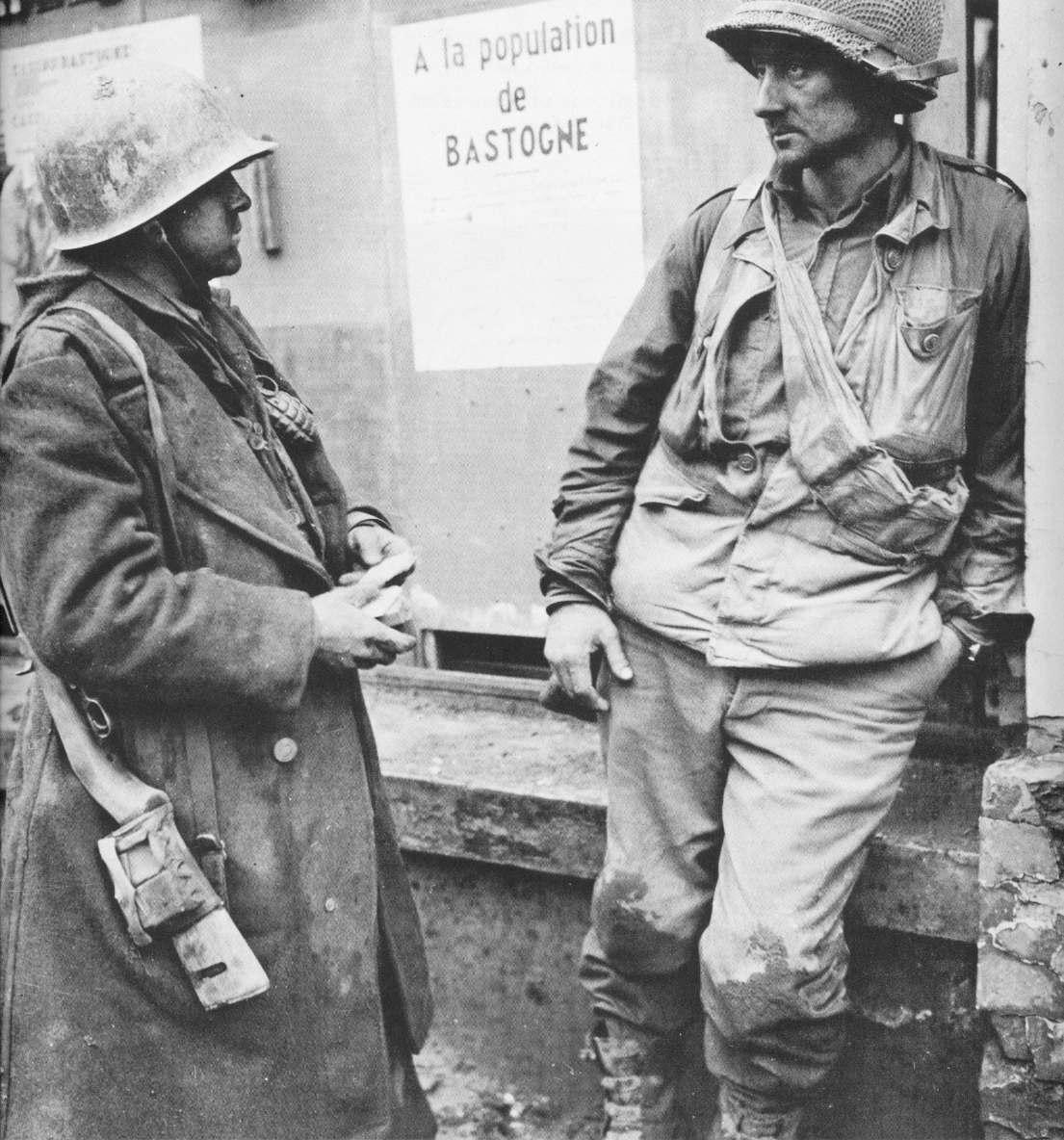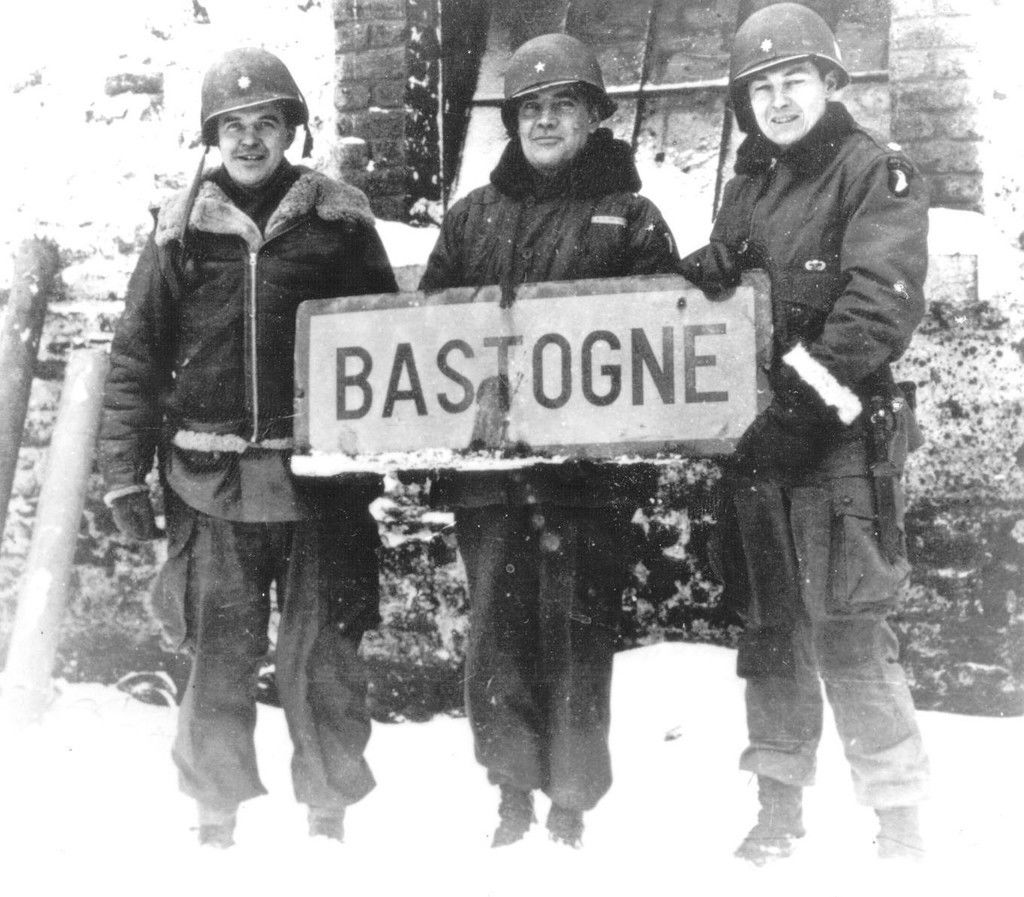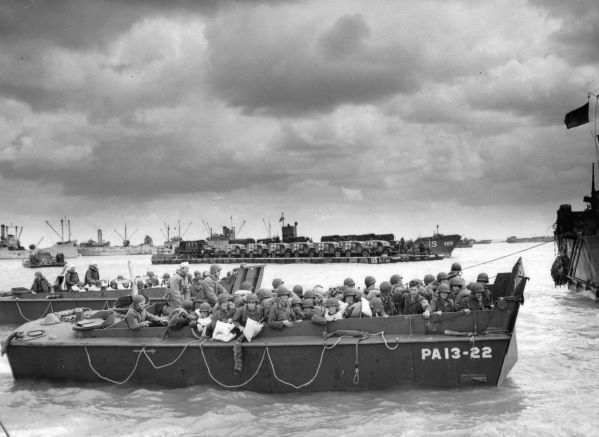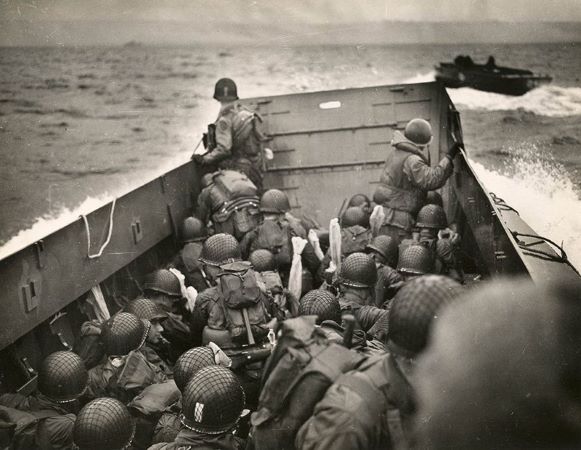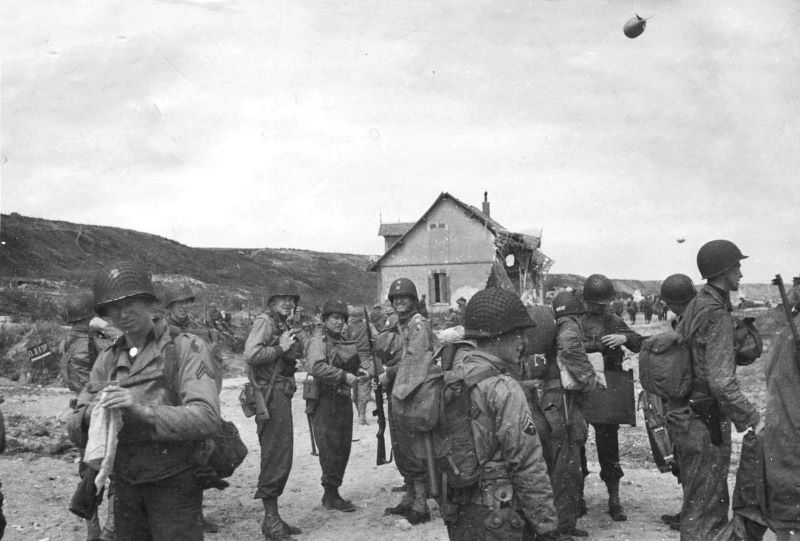|
Offering the rarest of the rare, most sought after GREAT WAR RELICS.
May God bless those who served. May His light be your guide. CONTACT
|
NEW RELICS |
INCREDIBLE HISTORIC Lot of WWI Battlefield Dug Relic German EGG GRENADE Marked ! - ( Recovered Ypres, Flanders Fields, Belgium ) Here is an incredible consignment collection of WWI grenades that were recovered Belgium, Ypres Battlefield. The First Battle of Ypres, also called the First Battle of Flanders was a First World War battle fought for the strategically important town of Ypres in western Belgium in October and November 1914. The German and Western Allied attempts to secure the town from enemy occupation included a series of further battles in and around the West Flanders Belgian municipality.The strategy of both the Allied and German armies is not entirely clear. The accepted and mainstream reasoning for the Ypres battle was the British desire to secure the English Channel ports and the British Army's supply lines; Ypres was the last major obstacle to the German advance on Boulogne-sur-Mer and Calais. The French strategy was to prevent German forces from outflanking the Allied front from the north. This was the last major German option, after their defeats at the First Battle of the Aisne and First Battle of the Marne. The Ypres campaign became the culmination of the Race to the Sea. The opposing armies engaged in offensive operations until a big German offensive in mid-October, which forced the Allies onto the strategic defensive and limited to counter-attacks. Free Shipping / LOA Provided / Instalments Available
|
Hiroshima Atomic Melted Traditional 24 oz Green Glass Yongobin (Sake Bottle) Historical and Scientific Significance The initial flash and fireball were followed by a severe blast wave with pressures estimated at 1,200 pounds per square foot, combining to demolish almost everything. Iron, roof tiles and bottles like this artifact were melted in these three seconds to varying degrees, depending on their distance from the hypocenter. Thermal effects were observed up to 3,200 feet from Zero Ground. A granite tombstone located 1,970 feet away exhibited ruffled and bubbled glass-like surfaces from exposure to thermal radiation at 3,300°F for three seconds. Similarly, roof tiles found 2,400 feet away from the hypocenter exhibited rough burnt surfaces requiring temperatures of 2,300°F to form. Unique Features
Rarity and Value: Shown with the images of this sake bottle is a photograph of survivor and peace activist Kiyoshi Kikkawa (1913-1987) holding such a "yongobin" in his "Atomic Souvenir Shop" C. 1953 near the Genbaku Dome (private collection).
|
RARE WW2 Battlefield Dug Relic Wehrmacht Anti-Tank Pak 37mm Round with Casing ! Beautiful complete Display Here is an incredible inact display relic Wehrmacht Pak 37mm Anti-Tank Shell and Casing round ! Recovered Battle of Berlin. The Pak 36 (Panzerabwehrkanone 36) is a 3.7 cm / 37mm caliber German anti-tank gun used during the Second World War. It was the main anti-tank weapon of Wehrmacht Panzerjäger units until 1942. Developed by Rheinmetall in 1933, it was first issued to the German Army in 1936, with 9,120 being available by the beginning of the war in September 1939 and a further 5,339 produced during the war. As the predominant anti-tank gun design in the world during the late 1930s. $ 550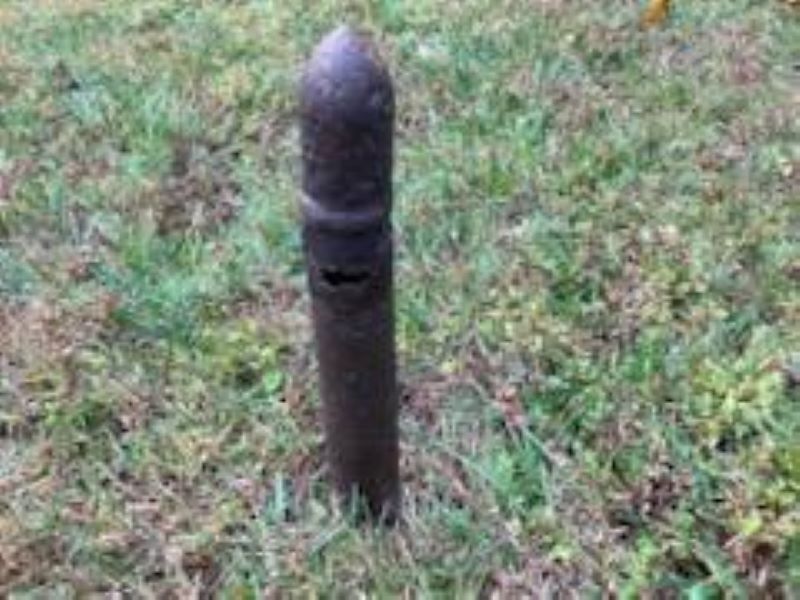 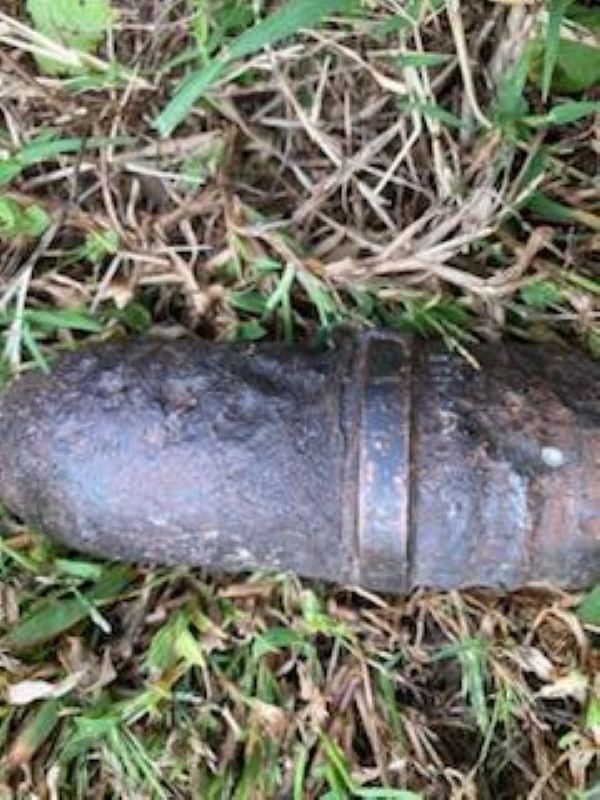 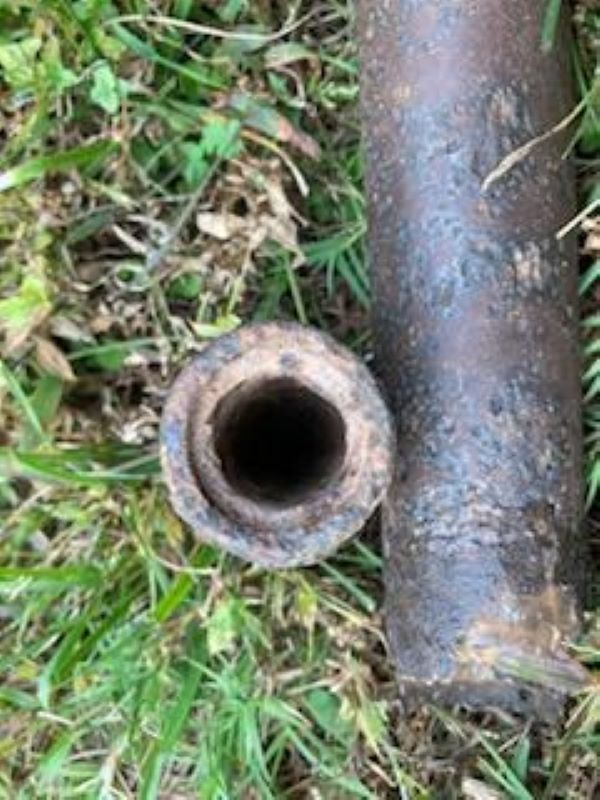 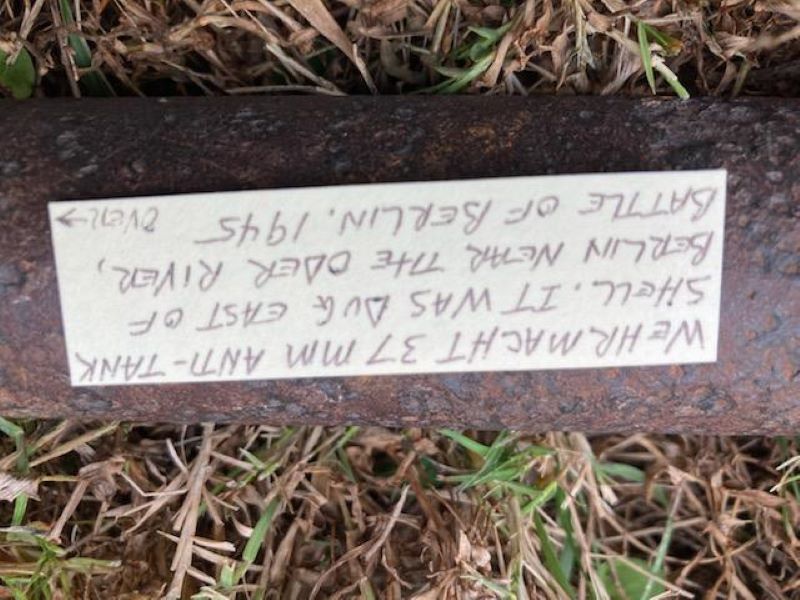 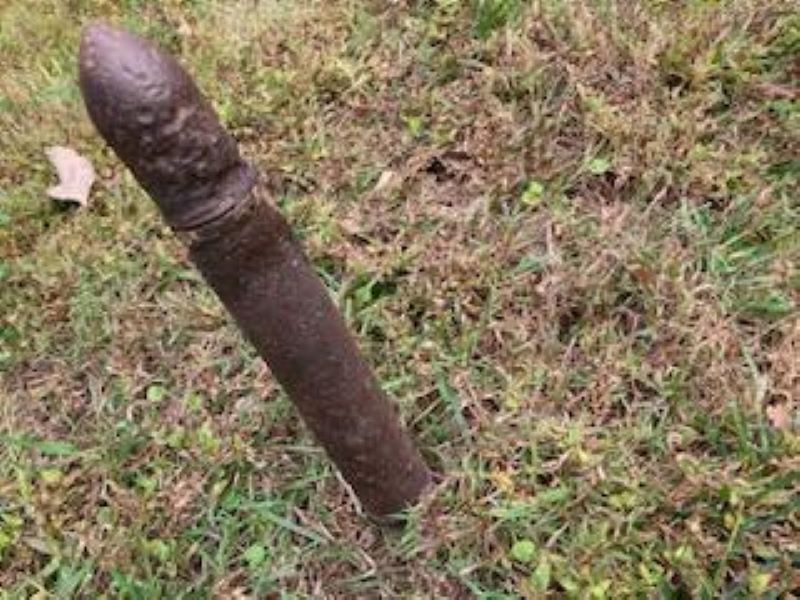 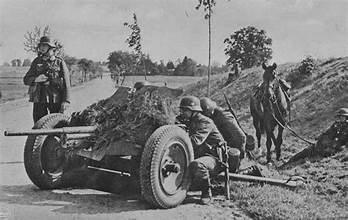 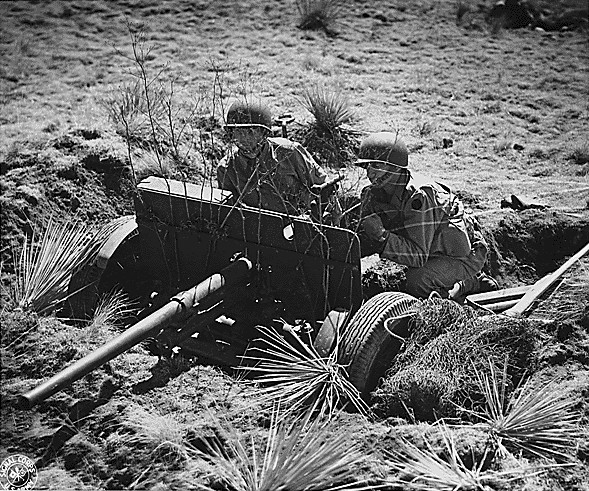 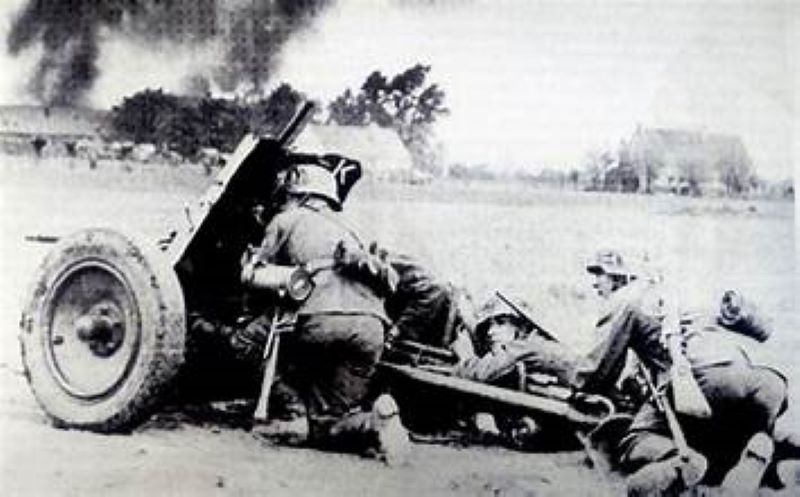 |
IMPRESSIVE ARTIFACT ! Battle-Damaged WW2 German 510th Heavy "TIGER TANK" Panzerkampfwagen VI Tiger Ausf. LARGE Section of MAIN GUN CANNON BARREL Blown apart by a Projectile Strike ! Battlefield Dug in positions occupied by Tiger Tanks of the Pz. Abt. 510 Heavy Panzer Battalion Here is a chance to own a LARGE section of the Main Gun Barrel with crisp rifling grooves visible that was "blown-apart" in battle and dug in positions of the 510 Panzer Heavy Battalion that were destroyed at Kurland ! Highly collectible artifact ! This section is large nad thick which would place this section near the tank side close to the mantlet. The 510th Heavy Panzer Battalion (German: schwere-Panzer-Abteilung 510, abbreviated s.Pz.Abt. 510) was a Germanheavy Panzer-Abteilung equipped with Tiger I and later Tiger II Königstiger tanks. The 510th saw action on the Eastern Frontduring the Second World War.The 510th was formed June 1944; in July it was sent to Lithuania, where it fought in the Courland Pocket until the end of the war, attached to the 14 the Panzer Division. Elements of the battalion were evacuated from Courland and transferred to the Western Front, where they subsequently surrendered to the Western Allies. A battle group with the last 15 Tiger tanks was left behind in Courland, where it surrendered to the Red Army. Tigers were usually employed in separate heavy tank battalions (schwere Panzer-Abteilung) under army command. These battalions would be deployed to critical sectors, either for breakthrough operations or, more typically, counter-attacks. A few favoured divisions, such as the Grossdeutschland, and the 1st SS Leibstandarte Adolf Hitler, 2nd SS Das Reich, and 3rd SS Totenkopf Panzergrenadier Divisionsat Kursk, had a Tiger company in their tank regiments.The Grossdeutschland Division had its Tiger company increased to a battalion as the III Panzer Battalion of the Panzer Regiment Grossdeutschland. 3rd SS Totenkopf retained its Tiger I company through the entire war. 1st SS and 2nd SS had their Tiger companies taken away and incorporated into the 101st SS Tiger Battalion, which was part of 1st SS Panzer Corps. The Tiger was originally designed to be an offensive breakthrough weapon, but by the time it went into action, the military situation had changed dramatically, and its main use was on the defensive, as a mobile anti-tank and infantry gun support weapon.Tactically, this also meant moving the Tiger units constantly to parry breakthroughs, causing excessive mechanical wear. As a result, there are almost no instances where a Tiger battalion went into combat at anything close to full strength. LOA Provided / Free US Shipping / Monthly Installments Available $ 690
|
Vitrified Roof Tile from Hiroshima City, Recovered from The Motoyasugawa River across from the Genbaku Dome This remarkable vitrified traditional Kawara roof tile fragment is a relic from the world’s first use of an atomic weapon and the only detonation in history of a uranium-235 bomb (the Trinity test, Nagasaki, USSR’s “Joe-1,” and all others were plutonium bombs). The catastrophic atomic destruction of Hiroshima City, the capital of Hiroshima Prefecture, by the United States on August 6th, 1945, began a new type of warfare on a different scale. At exactly 8:15 a.m. local time on a clear, blue morning, the uranium-fueled bomb code-named “Little Boy,” released from the Boeing B-29 Superfortress bomber Enola Gay 43 seconds earlier, exploded at an altitude of 1,968 feet above Shima Hospital, now the location of Shima Clinic, on the south side of the exit the parking lot south of the clinic at Otemachi 1-chome, in the city’s Naka Ward (Fujimi-cho in 1945). The location is near the courtyard of the original hospital. The coordinates, 132 degrees, 27 minutes, 17.3 seconds east longitude, 34 degrees, 23 minutes, 40.5 seconds north latitude, were pinpointed in 2020 by Yoshihiko Takesaki, a specialist in geography and a former assistant at Hiroshima University’s Research Institute for Radiation Biology and Medicine. The bomb unleashed a blinding destructive explosion equivalent to over 15,000 tons of conventional TNT, the most powerful explosion ever created by man at this point. Witnesses compared it to seeing burning magnesium, which produces a brilliant white light. It was so very bright many people reported seeing the bones in their hands when covering their eyes. Of the immense energy released, 35% was emitted as thermal radiation, including ultraviolet, visible, and infrared light. The initial surface temperature beneath the hypocenter immediately soared to an incredible 11,350°F, vaporizing people and other combustible materials before the 1,000 MPH shock wave could reach them. This instant flash was followed by a rapidly expanding raging fireball, with core temperatures of several million degrees and surface temperatures of 540,000°F, reaching 90 feet in width just 1/10,000 of a second after detonation. Within three seconds, the fireball grew to 930 feet in width, with surface temperatures of 12,650°F fading out to 3,100°F. Although the thermal energy affected materials for only a very brief time (largely within 1/100th of a second to perhaps 1.3 seconds and up to three seconds in all), its impact was physically profound, significantly altering the surface composition of materials within its reach. The initial flash and fireball were followed by a severe blast wave, with pressures estimated at 1,200 pounds per square foot, combining to demolish almost everything. Roof tiles, bricks, glass, and even iron, were melted in these one to three seconds to varying degrees, depending on their distance from the hypocenter. Thermal effects were observed up to 3,200 feet from Zero Ground. A granite tombstone, located 1,970 feet away, exhibited ruffled and bubbled glass-like surfaces due to exposure to thermal radiation at 3,300°F for three seconds. Similarly, roof tiles found 2,400 feet away from the hypocenter exhibited rough burnt surfaces requiring temperatures of 2,300°F to form. 92% of Hiroshima’s buildings, primarily wood and paper, were instantly incinerated or destroyed. Steel-reinforced concrete buildings in the vicinity were left empty. Shima Hospital was completely demolished - the 80 people inside vanished. Between 27% and 30% of the population (70,000 to 80,000 people) were killed instantly, with 22% of these victims being schoolchildren largely 13 to 14 years olds according to very recent research. Digital restoration of two rare negatives taken by Yoshito Matsushige just three hours after the bombing has revealed many young students seeking refuge at the Miyuki Bridge that morning. In the days, weeks, and months to follow, an additional 90,000 to 166,000 people would die from burns and/or radiation sickness. This atom-blasted roof tile fragment is more than just a relic from the first atomic bomb; it bears poignant physical testimony to one of the most pivotal moments in human history, carrying with it the stories and memories of that terrible event. It serves as a stark reminder of the devastating power of nuclear weapons. The size of the artifact and the nature of the extreme surface disruption indicate a likely near Zero Ground at the time of detonation, being vitrified, broken into its current size and blown by the blast wave in a straight line directly into the Motoyasugawa River across from the Genbaku Dome. The shock wave, traveling at 1,440 feet per second, propelled some objects over 2.5 miles from Zero Ground. Many were blasted in the River. This distance was determined by fires ignited by the blast. A very rare, potent, and unique artifact from the only detonation of a uranium bomb of any kind in history. Measures 4" on the long side. Natural edges; as recovered from the Motoyasugawa River (shown below in B/W and color panoramic Kodachrome), circa 1980s. Recent (2023) Auction history for roof tiles is $1,251 for a roof tile only 1.75″ x 2.25″ x .5″. This is 4" x 1" - substantially larger and thicker. $990 A NOTE REGARDING THESE ARTIFACTS: These artifacts are not radioactive and present no danger at all. The reason is that both atomic bombings were airbursts. The vast majority of fission byproducts were disbursed into the atmosphere. Most artifacts from either bombing often only show normal background radiation. Exercise normal precautions; don't smoke or eat while handling etc., don't inhale any particulate matter and wash your hands after handling.
|
Rare Atomic Bombed Melted Glass Fragment, Nagasaki City, Urakami Valley, Nagasaki Prefecture, Japan On the morning of Wednesday, August 9th, 1945, at 11:02 a.m. local time, the first plutonium-fueled atomic bomb, ‘Fat Man,’ detonated at a height of approximately 1,650 ft above Nagasaki City in the Urakami Valley, Nagasaki Prefecture. The bomb had been dropped 53 seconds earlier by the Boeing B-29 Superfortress nicknamed “Bockscar,” commanded by Major Charles Sweeney. This would be the last atomic weapon ever deployed in active warfare. Instantly, there was a great burst of alpha, beta, gamma and neutron radiation, extreme thermal radiation and the accompanying electromagnetic pulse followed by a tremendous shock wave travelling much, much faster than that at Hiroshima for several reasons (bomb design/fuel, lower detonation height, and the geography of the valley), The fireball created expanded to a mile in width in less than a second and reached surface temperatures of 5,430 to 7,230° F, instantly deforming the glass fragment while creating the frosted surface by vitrification on the exposed surface, leaving the "inside" with its original finish. The glass was then shattered by the ensuing shock wave, which is why the broken edges are not frosted, and likely violently relocated. This provides excellent visible and physical evidence of the shock wave coming after the thermal flash. The heat and explosive energy released levelled the north of the city, totally destroying or severely damaging 92% of all structures. Of the total population of 263,000 people, 15% (40,000 people) were killed immediately, and within 24 hours another 30,000 people would die. This frosted glass fragment bears tangible witness to this event, one of the most significant events in modern history and serves as a poignant and powerful reminder of the devastation of these weapons. This fragment was collected C.1980. Whether you are a collector of historical artifacts, a student of World War II history, or someone who values the significance of this event, this is a unique opportunity to acquire a rare artifact from this key moment in world history. Measures approximately 2" x 1 1/2" (uneven shape), with thermally distorted form, vitrified surfaces on one side and natural glassy broken edges as recovered from the ground. $640 A NOTE REGARDING THESE ARTIFACTS:
|
Here is a large lot of WW2 Mauser Rifle Casings recovered from the Market Garden campaign. Fantastic for display .. Headstamps visible on most ..On 5 September, Model's forces were bolstered by the arrival of the II SS Panzer Corps, which consisted of the 9th SS and 10th SS Panzer Divisions under the command of Lieutenant General Wilhelm Bittrich. The Corps had been reduced to approximately 6,000–7,000 men, 20–30% of its original strength in the course of continuous action since late June including in the Falaise pocket; losses in officers and NCOs had been especially high Model ordered the two divisions to rest and refit in 'safe' areas behind the new German line; these areas coincidentally were to be Eindhoven and Arnhem.The 10th SS Panzer Division was to be restored to full strength in order to provide an armoured reserve and thus the 9th SS Panzer Division was ordered to transfer all of its heavy equipment to its sister division; it was intended that the 9th would then be transported to Germany for replenishment.At the time of Operation Market-Garden, the 10th SS Panzer Division had an approximate strength of 3,000 men; an armoured infantry regiment, divisional reconnaissance battalion, two artillery battalions and an engineer battalion, all partially motorized.Other formations were appearing to strengthen the German defences. Between 16 and 17 September two infantry divisions from Fifteenth Army assembled in Brabant, understrength but well-equipped and able to act as a reserve. Near Eindhoven and Arnhem a number of scratch formations were being assembled. Several SS units, including an NCO training battalion and a panzergrenadier reserve battalion, were being prepared to enter combat and Luftwaffe and Kriegsmarine personnel were being grouped into Fliegerhorst and Schiffstammabteilung formations. There were also a number of training battalions that were being equipped, several depot battalions from the Hermann Goering Panzer Division and various artillery, anti-aircraft and field police units scattered throughout the north of the Netherlands. incredible relics ! 5 casings for $29 shipped! Free shipping within the US.
|
NCREDIBLE HISTORY ! WW1 Belgian Artillery Officers Tunic Jacket with "Shrapnel Damage" from Shelling during WW2 Battle of the Bulge Provenance to positions of US 82nd Airborne Paratrooper Division. ( Other Bulge Items in photo not included ) Here is an incredible historic piece with WW1 and WW2 History as well as Battle of the Bulge ! A Belgian Artillery Officers Uniform Jacket with shrapnel damage and cool provenance that it was recovered from an attic home in Belgium that was shelled during the Battle of the Bulge causing damage to a wardroble of a WW1 veteran. 82nd Airborne relation per the attached museum tag. "In December 1944, Adolph Hitler attempted to split the Allied armies in northwest Europe by means of a surprise blitzkrieg thrust through the Ardennes to Antwerp. Caught off-guard, American units fought desperate battles to stem the German advance at St.-Vith, Elsenborn Ridge, Houffalize and Bastogne. As the Germans drove deeper into the Ardennes in an attempt to secure vital bridgeheads, the Allied line took on the appearance of a large bulge, giving rise to the battle's name. Lt. Gen. George S. Patton's successful maneuvering of the Third Army to Bastogne proved vital to the Allied defense, leading to the neutralization of the German counteroffensive despite heavy casualties." While Belgian civilians were preparing for Christmas in their new-found freedom after the liberation of Belgium in September 1944, the firing suddenly resumed. The inhabitants were trapped in the heart of the battle: the German Ardennes Offensive in December 1944, also called the Battle of the Bulge. With a death toll mounting to 3,000, the Battle exacted a heavy tribute from the civilian population. 250 civilians were murdered by the German troops. The nefarious acts of massacre, as in Stavelot and Bande, were perpetrated by the SS and SD. However, an equal number of Belgian deaths must be ascribed to the Allied forces. Located at important crossroads in a hilly region crossed by marshy areas that made the roads vital for tanks to advance, the small towns in the Ardennes were the scene of savage and destructive fighting. Bastogne was one such, as were Malmedy, Houffalize, La Roche and Saint Vith, a large marshalling yard that was almost entirely flattened by the American Army Air Force and the Royal Air Force. In the three Belgians provinces of Namur, Liège and Luxembourg at least 11,000 buildings were destroyed. Caught in the net like the troops, the civilians took shelter in the region's thick-walled stone cellars, that provided relatively safe shelter during the ground fighting. But no place was safe when the bombs rained down. Most civilians took refuge in the cellars, with no food, no clothing and no heat during this most severe winter in memory. After the war the houses in the Ardennes were rebuilt, but death lingered on in the region. The very ground was deadly, being sown with hundreds of thousands of unexploded munitions. LOA Provided / Free US Shipping / Installments Available ! $350
|
RARE to Find from Battlefield ! WW2 Battlefield found relic US GAS MASK that was Recovered Historic Battle of the Bulge - 99th US Infantry Division 393rd Regiment Northeast of Rocherath n early December, the 2nd Infantry Division was assigned to capture a vital crossroads marked by a customs house and a forester’s lodge named Wahlerscheid, at the southern tip of the Battle of Hürtgen Forest. They transitioned through the 99th division's lines and after a deadly, costly battle, captured the crossroads. But the Germans counterattacked in what the Americans initially thought was a localized spoiling action, but was actually a leading element of the Battle of the Bulge. The 2nd ID consolidated their lines, pulling back into Hünningen, and then to the twin villages of Rocherath-Krinkelt, and finally at the dug-in positions held by the 99th ID at Elsenborn Ridge. In a fierce battle lasting 10 days, the American and German lines were often confused. During the first three days, the battle was for the twin villages of Rocherath-Krinkelt, during which American G.I.s were at times isolated in individual buildings surrounded by German armor. Attacking Elsenborn Ridge itself, the Germans, although superior in numbers, were stopped by the Americans' well-prepared and deeply dug-in defensive positions. General Robertson's plan for moving his 2d Division south was to "skin the cat," pulling the most advanced battalions in the Wahlerscheid sector back through the others. In addition to the main supply road, a part of the division could use the secondary route running more or less parallel to the Wahlerscheid road until the two met at a fork about a mile north of Rocherath.The 395th Infantry was in the woods east of the northernmost section of the 2d Division withdrawal route and would provide cover for the first stage of the tricky move parallel to and close behind the rapidly deteriorating front. Then too the enemy at the Wahlerscheid road junction seemed hardly strong or aggressive enough to make even a daylight disengagement difficult.The danger zone would be the twin villages. Roads from the east led into Rocherath and Krinkelt. And, to the east, as information from the 99th Division rifle battalions warned, the Germans had made a deep penetration and were liable at any moment to come bursting out of the forest. Rocherath and Krinkelt had to be held if the 2d Division was to reach the Elsenborn position intact and with its heavy weapons and vehicles. The 99th Division had long since thrown its last reserve into the battle; therefore the 2d Division (with the attached 395th) alone had to provide for the defense of this endangered sector of the corridor south. The leading company, now alone, entered Rocherath at dusk but found no guides and marched on through the next village until met by bullet fire. Twice the company doubled back on its trail until finally found by the battalion executive and directed to the proper position. Company B arriving about 2130, moved in on the left of Company A but was still on the surface (not having had time to entrench) when German tanks and infantry struck from the northeast at Krinkelt. Company A, well dug in and with all its weapons emplaced, let the tanks roll past and then took on the infantry. Its neighbor, Company B, exposed and without its supporting weapons, was riddled, only one platoon managing to escape. The Company B survivors, joined by what was left of Company C, fell back to the regimental command post in Rocherath and joined the antitank company in the street fight raging there.Back at Krinkelt three German tanks with infantry clinging to their decks got into the eastern streets: with this foothold won more Germans appeared as the night went on. The fight for Krinkelt surged back and forth, building to building, hedgerow to hedgerow. Men on both sides were captured and recaptured as the tide of battle turned. A German attempt to seize the heavy-walled church on the northern edge of the village was beaten off by the reconnaissance company of the 644th Tank Destroyer Battalion, which had lost a platoon at Büllingen during the morning. The communications officer of the 1st Battalion, 38th Infantry, 1st Lt. Jesse Morrow, knocked out a tank with only a rifle grenade. (Morrow later was awarded the DSC.) The situation in Krinkelt was further confused by retreating troops from the 99th Division, intermixed as they were with the infiltrating enemy. One German, using a captured American to give the password, got past two outposts, but a sentry finally killed both men. At midnight a column of 99th Infantry vehicles started pouring through the town and continued the rest of the night.At Rocherath, the Germans who had so boldly entered the village earlier in the evening destroyed three American tanks as these inched their way out of the village to help Company K of the 38th Infantry. Here too the fight was bitter and confused. At one time a battalion commander of the 38th was reported to have men from sixteen different companies fighting under his command. By midnight, however, the enemy tanks behind the American lines had been accounted for and the German infantrymen captured or killed. When the wild night of fighting drew to a close, the Americans still were in control of the two villages and the near sector of the Wahlerscheid withdrawal. Your chance to own a piece of WW2 US legendary history.. LOA Provided / Free US Shipping / Installments available $ 620
|
INCREDIBLE HISTORIC RELIC ! WW2 Battlefield found Wehrmacht " Bullet-Struck" DRGM AFRIKA COCONUT Canteen ! Here is a neat and rare bullet struck Wehrmacht COCONUT Canteen/Flask with a bullet strike that was recovered in the Kurland Pocket ! The Battle has come to be known as the Battle of the European SS because the majority of the defenders were European volunteers. Joining the Nordland were the formations from all over Europe. The Dutchman of the 4th SS Volunteer Panzergrenadier Brigade Nederland, the Walloons of the 5th SS Volunteer Sturmbrigade Wallonien, the Flemings of the 6th SS Volunteer Sturmbrigade Langemarck, the Estonians of the 20th Waffen Grenadier Division of the SS (1st Estonian), as well as regular German formations. Altogether, the defenders of the Narva River line amounted to 50,000 men. Against them, the Soviets threw 200,000 men of the Leningrad Front.The original attack was launched on February 13th, with the Soviets attacking right across the line, as well as launching an amphibious assault from the Baltic near Mereküla. The Nordland annihilated the Soviet landing force. Over the next five months, the European SS held against the Soviet attacks, the Nordland seeing very heavy fighting. In March, the Soviets managed to destroy the Narva Bridge, cutting off the troops on the far side of the river. The men of Nordland's Pioneer Battalion quickly rebuilt the bridge while under heavy fire. The launch of Operation Bagration in June 1944 resulted in Army Group North becoming trapped in the Kurland Pocket. After months of heavy fighting, the Hermannsberg bridge over the Narva was blown and the defenders were moved 25 kilometers west to the Tannenberg Line.An incredible amount of captured German material were buried by the Russians and have been found at the battlefield surrender site. Helmets insignia, weapons, etc. Some of these still have portions of the cap material still attached. They are priced each and in 2 categories. Either complete and fairly nice or broken partial remains. In 1944, the Red Army lifted the siege of Leningrad and re-conquered the Baltic area along with much of Ukraine and Belarus. However, some 200,000 German troops held out in Courland. With their backs to the Baltic Sea. they were trapped in what became known as the Courland Pocket, blockaded by the Red Army and the Red Baltic Fleet. Colonel-General Heinz Guderian, the Chief of the German General Staff, insisted to Adolf Hitler that the troops in Courland should be evacuated by sea and used for the defense of Germany. Hitler refused, and ordered the Wehrmacht, Waffen-SS, Luftwaffe and Kriegsmarine forces in Courland to continue the defence of the area. Hitler believed them necessary to protect Kriegsmarine submarine bases along the Baltic coast. On January 15, 1945, Army Group Courland (Heeresgruppe Kurland) was formed under Colonel-General Dr. Lothar Rendulic The blockade by elements of the Leningrad Front remained until May 8, 1945, when the Army Group Courland, then under its last commander, Colonel-General Carl Hilpert, surrendered to Marshal Leonid Govorov, the commander of the Leningrad Front (reinforced by elements of the 2nd Baltic Front) on the Courland perimeter. At this time the group consisted of the remnants of some 31 divisions. After May 9, 1945, approximately 203,000 troops of Army Group Courland began moving to Soviet prison camps in the East. The majority of them never returned to Germany. LOA Provided / Monthly Installments Available / Free US Shipping ! $490 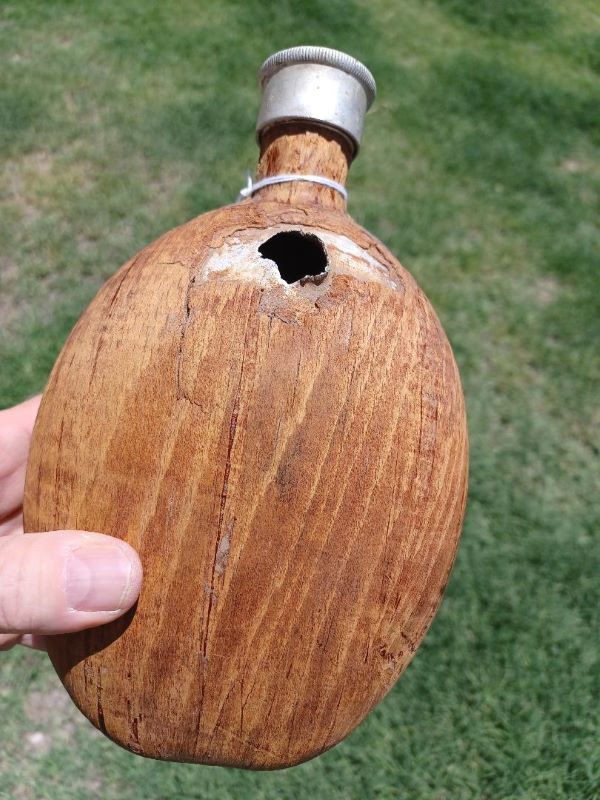 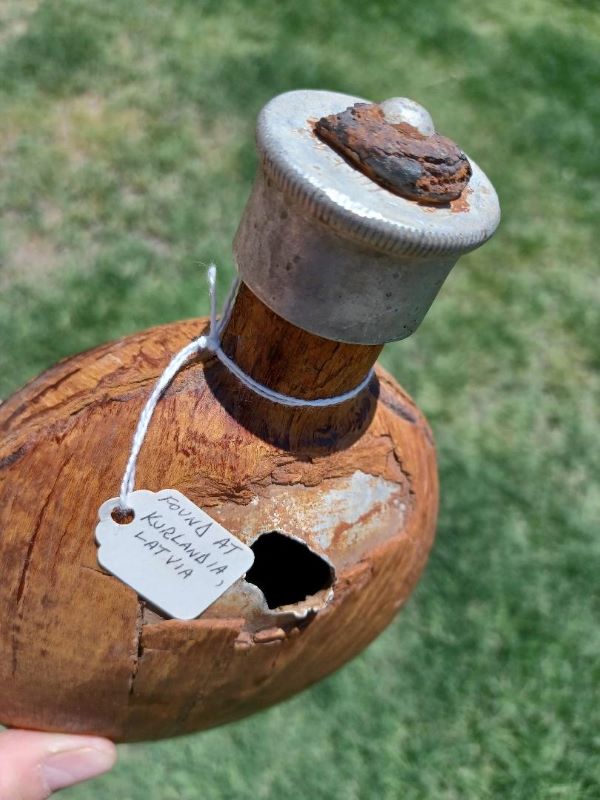 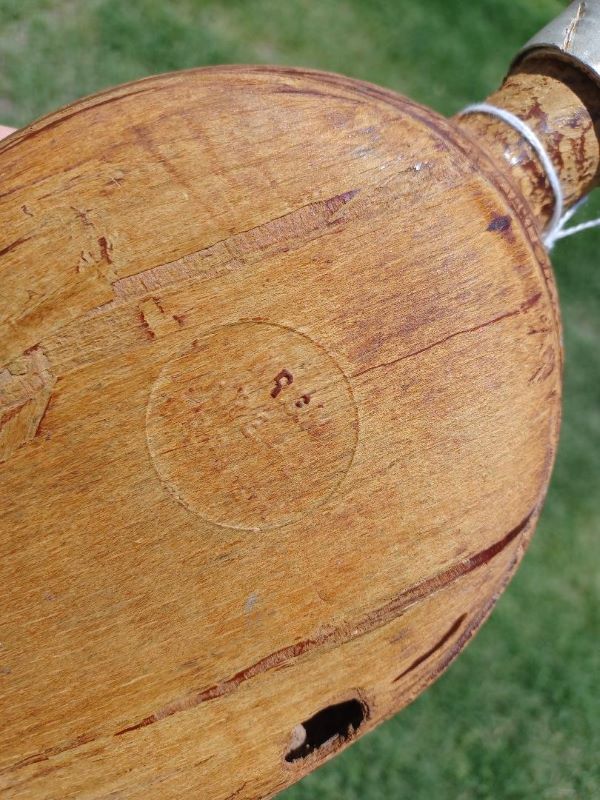 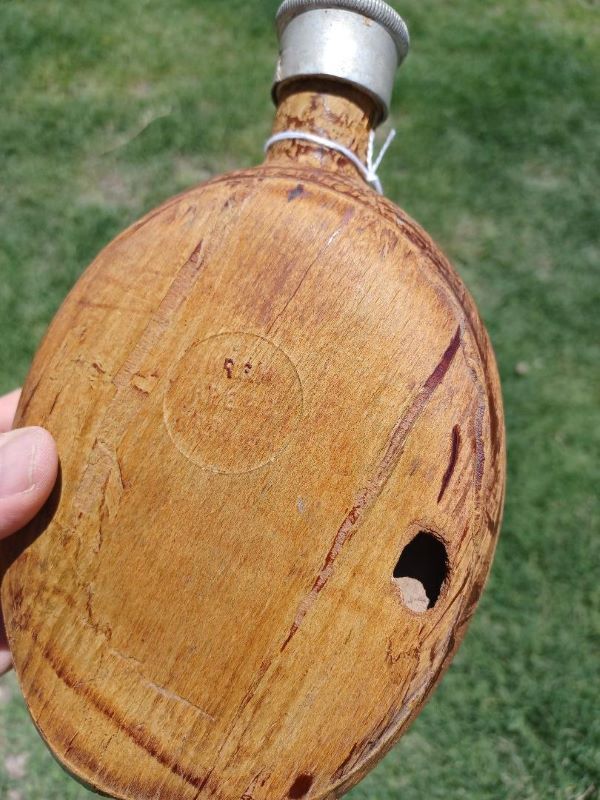 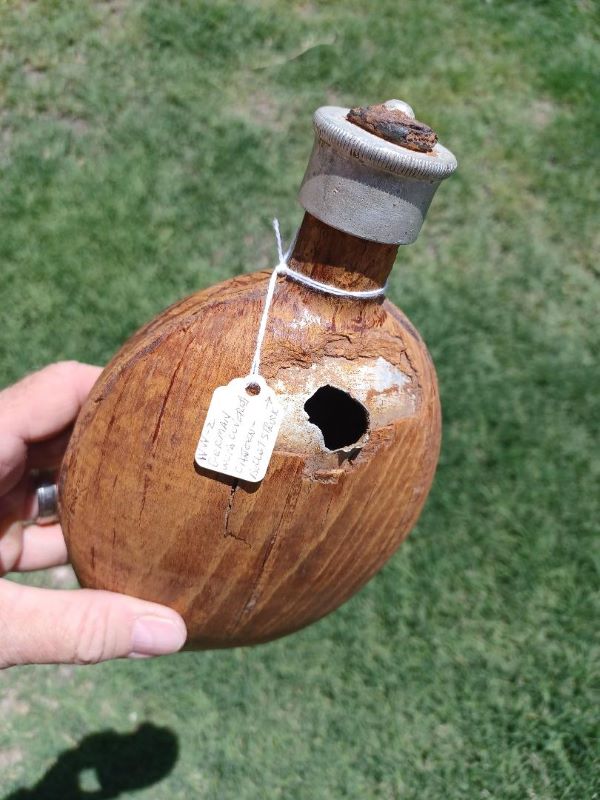  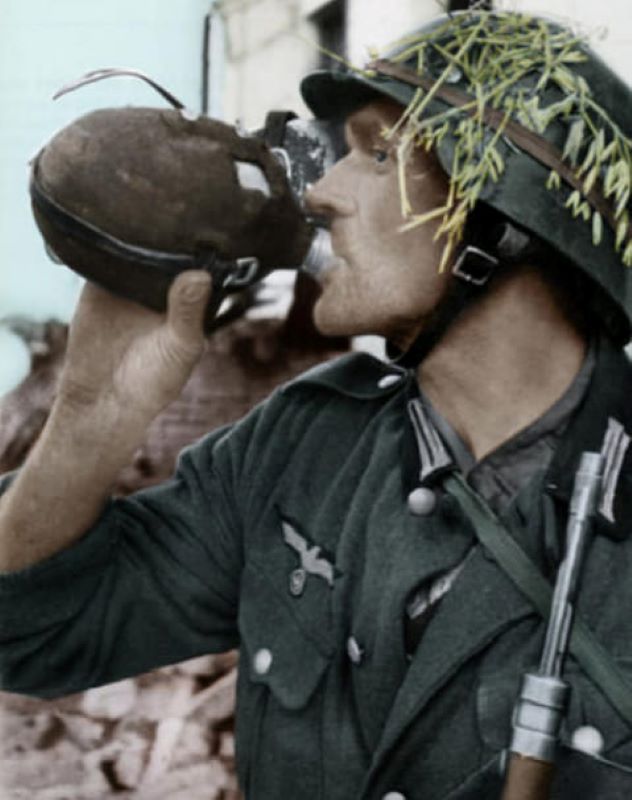 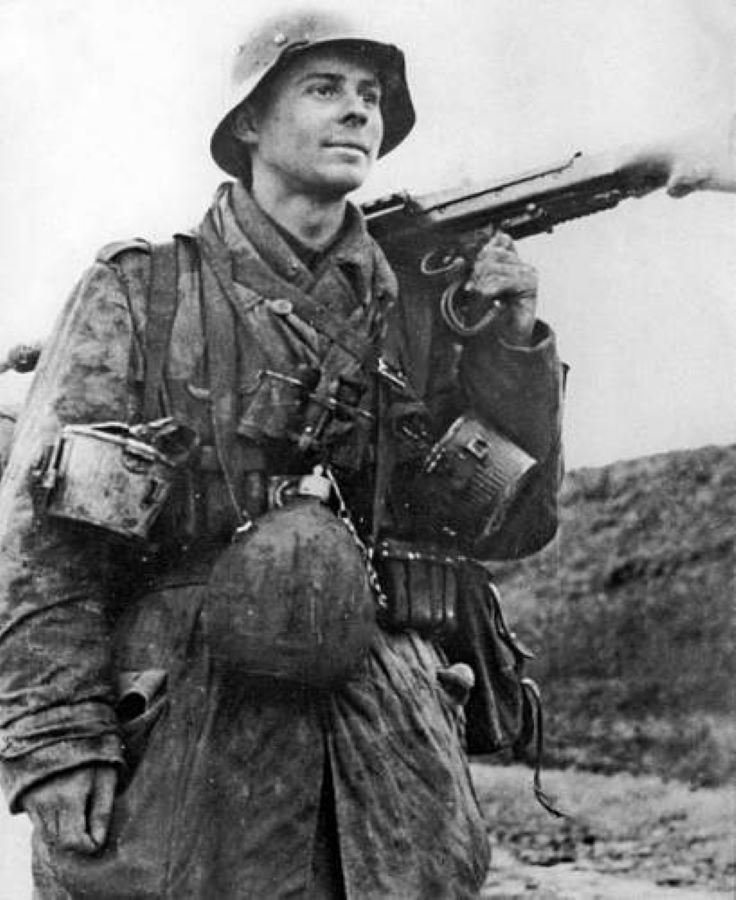
|
RARE AND HISTORIC ! ANOTHER HUGE Lot of WW2 Battlefield Dug RELIC US / Wehrmacht Bullets and Casings ( Recovered Normandy ) OWN an affordable lot of Normandy HISTORY !
Here is a historic cased Large Mix of a variety of all calibre of bullets and casings recovered from Normandy. The 30th Division was committed to its baptism of fire on 15 June 1944, in a sector previously occupied by the 501st Parachute Infantry Regiment of the 101st Airborne Division, with its first headquarters being established at a point just one mile south of Isigny, after leaving Omaha Beach. A few small communities were liberated, the Vire et Taute Canal crossed, and the first town, St. Jean-de-Daye, was liberated on 7 July. The Battle for St. LO had begun seriously on 3 July, continuing on for the next few days with fierce hedgerow fighting. In preparation for this great decisive battle, the 30th Infantry Division was assigned the formidable task of taking the high ground, a ridge, just to the west of St. LO.This was accomplished by 20 July, and thus denied the Germans of their prime observation positions overlooking St. LO, which had been the major deterrent for the 29th Division to enter and liberate the City of St. LO.With St. LO liberated and in the hands of the 29th Infantry Division, the next major task for the 30th Infantry Division was to create a major breach in the German defensive line, running parallel to the St. LO - Periers highway. This was called "Operation Cobra". Reorganization had taken place during the short lull in the battle while pre-paring for Operation Cobra which included filling the ranks with new replacements, caused by the many casualties endured in the past month. Each individual and unit was re-supplied with additional equipment and ammunition, in anticipation of the expansion after the planned breakthrough. Free US shipping LOA provided !
$ 160 for all !
 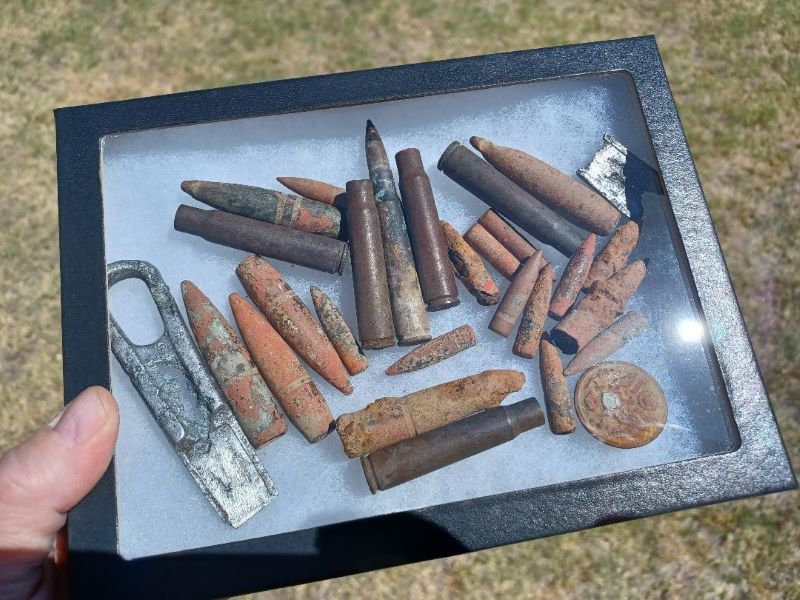 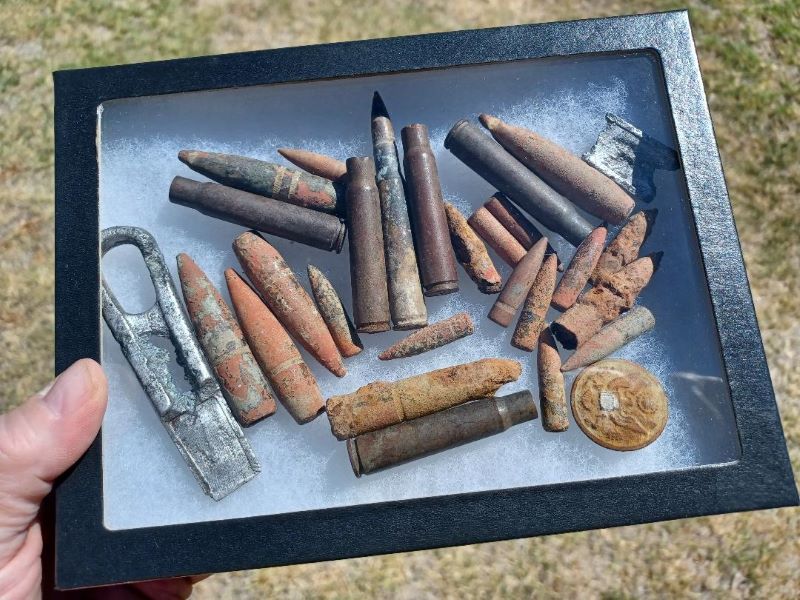 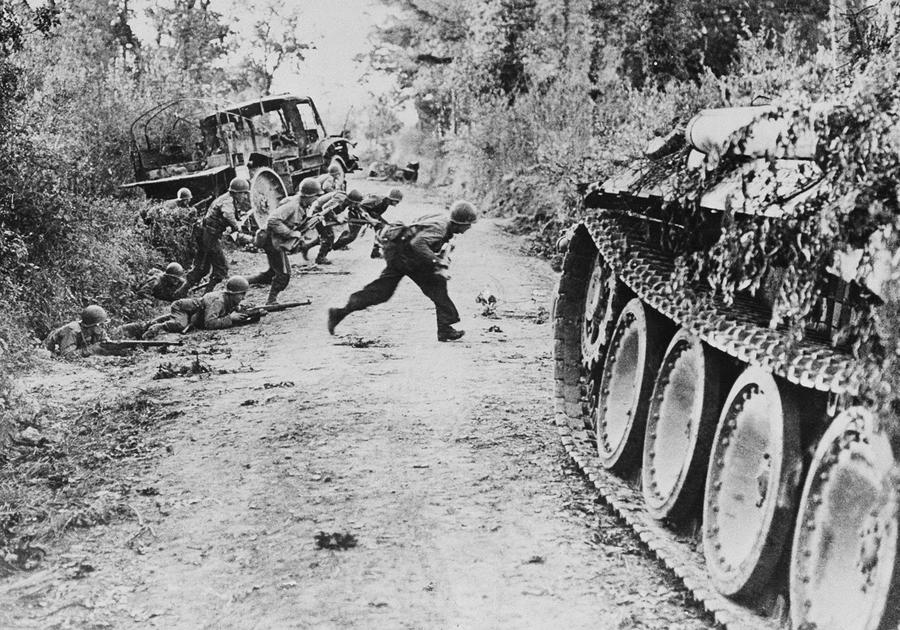 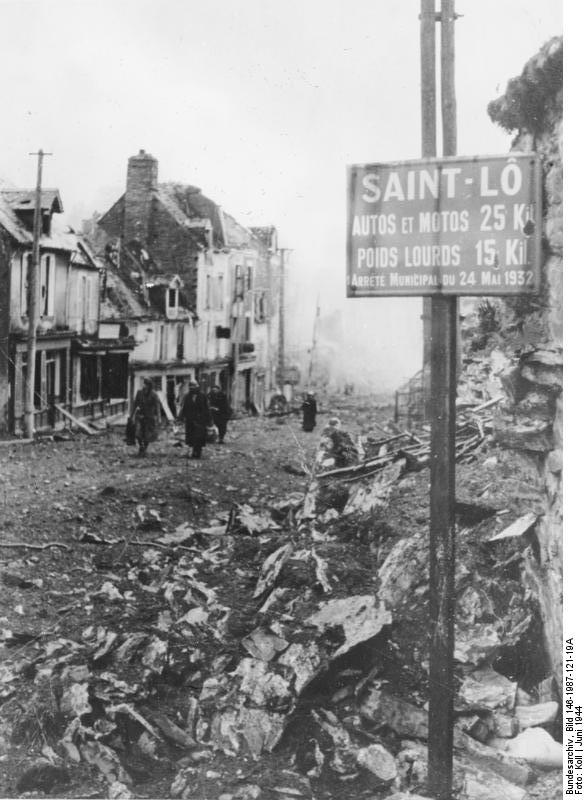
|
IMPRESSIVE GIGANTIC HISTORICAL ARTIFACT ! WW2 Battlefield Dug Relic BLOWN UP GIANT RUSSIAN TANK SU-122 ( Self-Propelled MAN GUN BARREL ) Thick Barrel Iron peeled back like a banana revealing the rifling grooves ! ( Recovered Kurland Pocket )
Here is an incredible museum worthy relic ! An actual huge section of an original WW2 Russian Self-Propelled Tank Main Gun Barrel section that has been blown up by either a charge to disable it or by an artillery round that exploded. The barrel was peeled back like a banana ! Incredible display artifact of the horrific fighting in the Kurland Pocket !
The first SU-122s produced in December 1942 were sent to training centers and two new combat units, the 1433rd and 1434th self-propelled artillery regiments. Initially, each of these mixed regiments consisted of two batteries with four SU-122s each and four batteries with four SU-76 tank destroyers each. Each regiment had an added SU-76 tank destroyer as a command vehicle. It was planned to raise 30 self-propelled artillery regiments operating within armoured and mechanized corps.In January 1943, the 1433rd and 1434th self-propelled artillery regiments were sent to the Volkhov Front near Leningrad as part of the 54th Army. On 14 January, they saw combat for the first time in Smierdny region. After that, it was decided SU-122s should follow between 400 m and 600 m behind the attacking tanks; sometimes this distance was shortened to between 200 m and 300 m.The use of SU-76 tank destroyers together with SU-122s proved unsuccessful. Based on combat experience, the organization of self-propelled artillery regiments was changed; the new regimental organization consisted of two batteries of SU-76 tank destroyers and three batteries of SU-122s, for a total of 20 self-propelled guns. In April, the organization of self-propelled artillery regiments was again changed. Separate regiments were created for SU-76 tank destroyers (light self-propelled artillery regiment) and SU-122s (medium self-propelled artillery regiment).The medium self-propelled artillery regiment consisted of four batteries of four SU-122s each. Each regiment was also equipped with either an added SU-122 or a T-34 for the commander and a BA-64 armoured car. This organization remained in place until the start of 1944 when the SU-122 began to be replaced by the SU-152, ISU-122 and ISU-152 heavy self-propelled guns, and the SU-85 tank destroyers.The SU-122 proved effective in its intended role of direct fire on strongholds. The massive concussion of the 122 mm high explosive round was reportedly enough to blow the turret off even a Tiger I if a direct hit was scored, a trait shared with the larger 152 mm howitzers. A new BP-460A high-explosive anti-tank (HEAT) projectile was introduced in May 1943; however, its primitive warhead design was only minimally more effective than brute concussive effects of the older high explosive shell. However, like most howitzers, the accuracy of the M-30 was less than that of contemporary weapons designed for anti-tank warfare.At least one SU-122 was captured by the German Army. Few SU-122s survived the war. Currently only one exists and is on display in the Kubinka Tank Museum LOA Provided / Monthly Installments available /
For Local Pick-up - If Buyer would like shipped it will a destination request with all details of shipping being buyer arranged, as its very heavy and large. 120 lbs.
$ 1800 Plus shipping
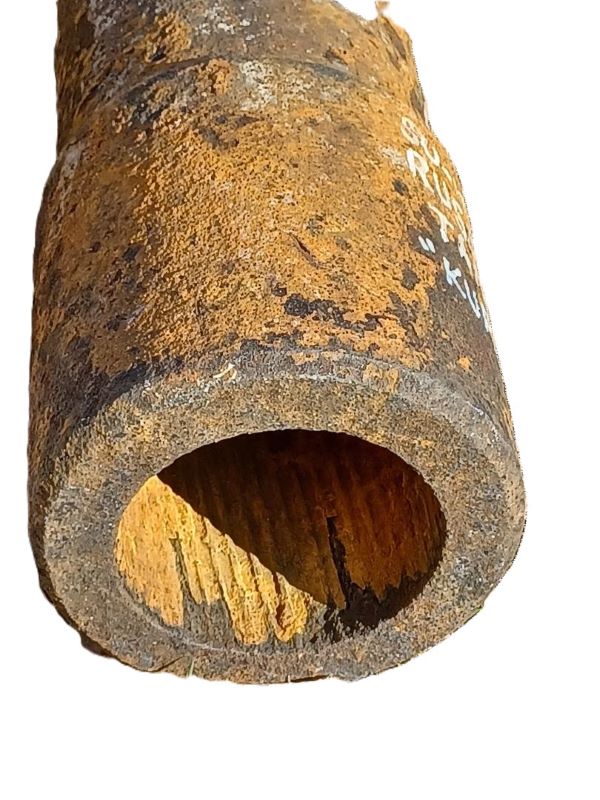 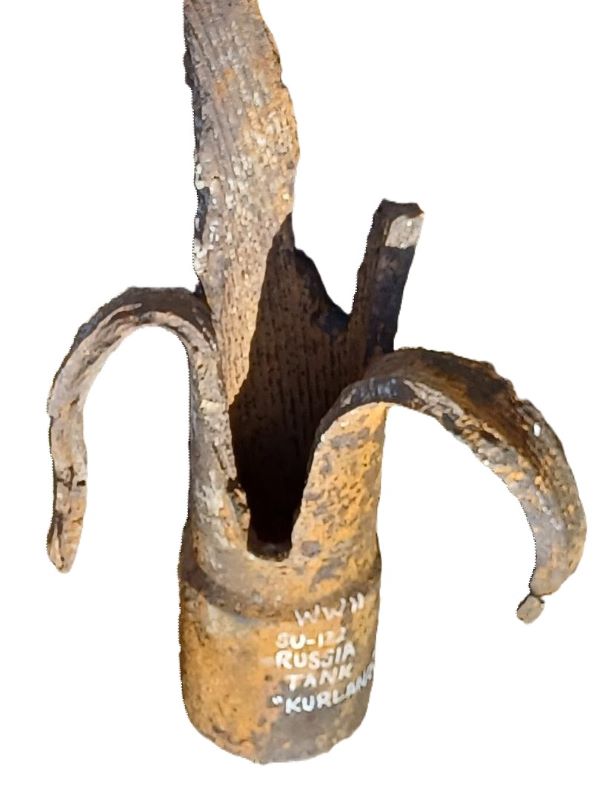  .jpg) 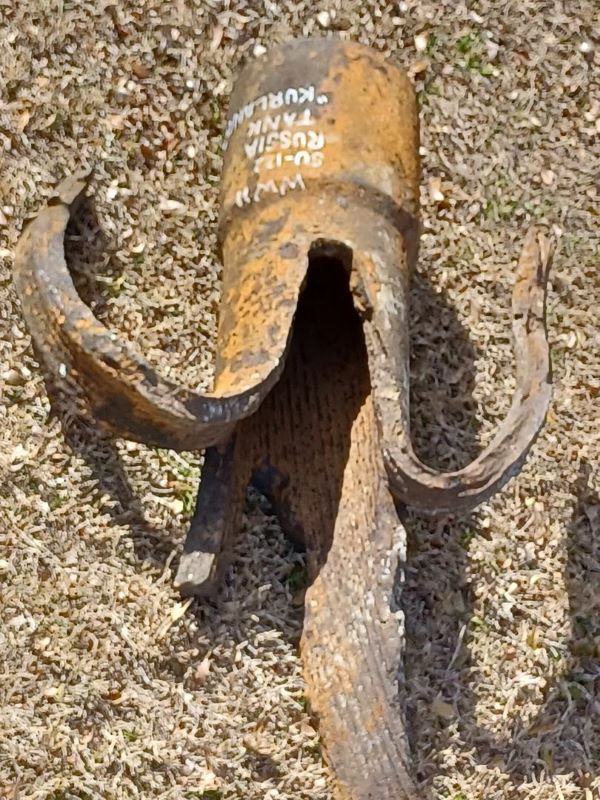 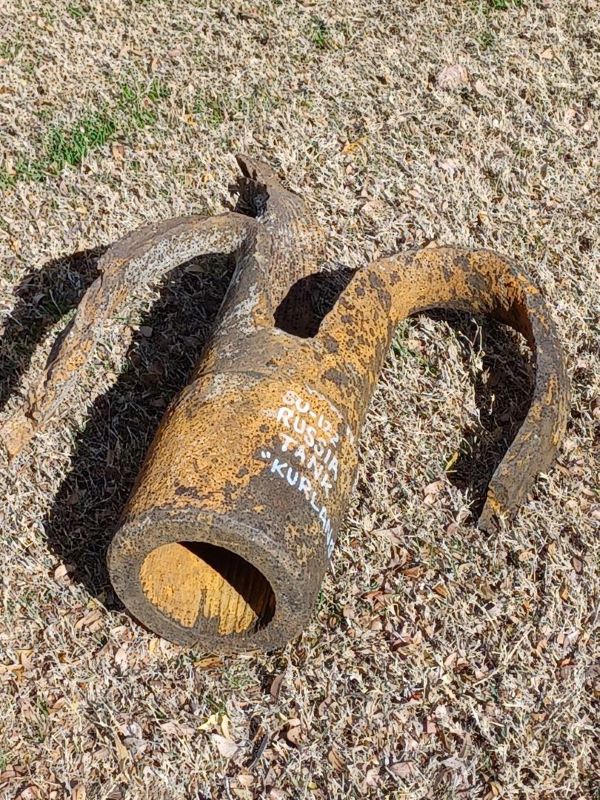 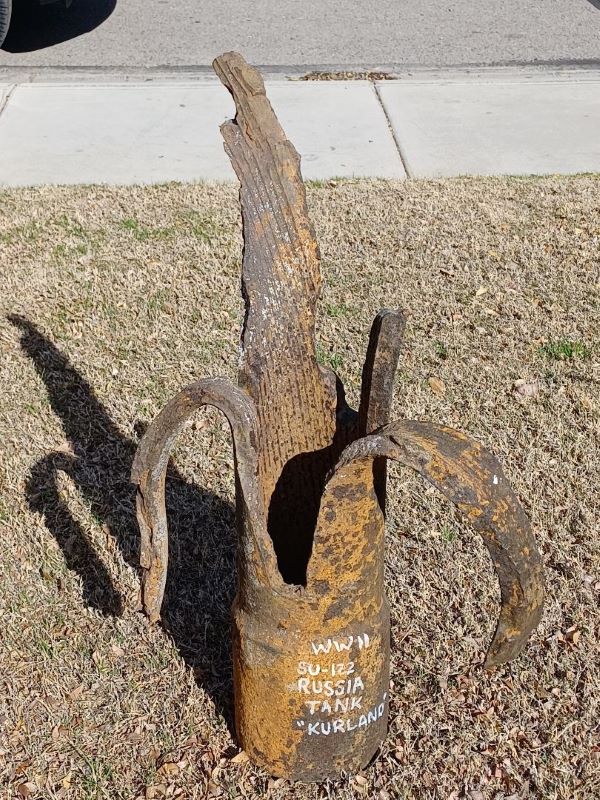 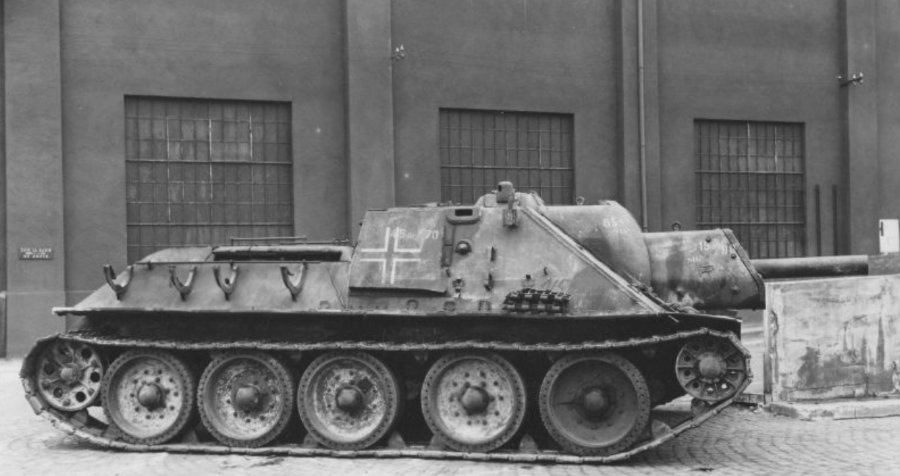 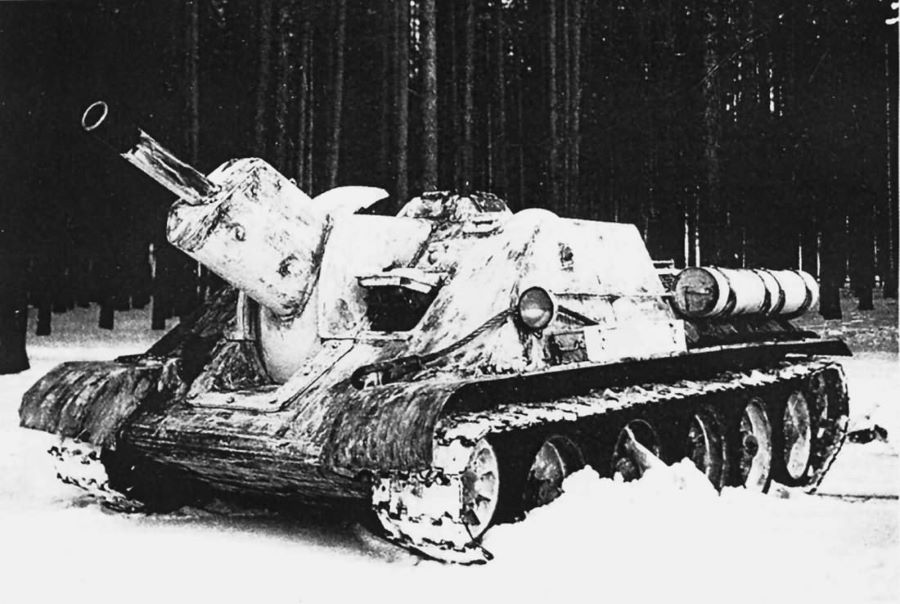  |
RARE WW2 NORMANDY Battlefield Found Lot of US and Wehrmacht Bullet Tips, Casings, and Relics from Tessy-sur-Vire, Saint-Lo, Normandy
Spectacular Finds by my friend in Normandy. These battlefield found US and Allied small arms casings and Tips were dug excavated in positions in Tessy-sur-Vire Normandy These are incredible WW2 Normandy dug relic lot ! Free Shipping within the US
$ 29 Each !
|
RARE WWII Lot of Dug RELIC Found US P-38 20mm Cannon Shells ! Here is a cool lot of WWII Dug Relic 20mm Shells. These were used most notably on the P38. Aircraft. First conceived in 1937 by Lockheed chief engineer Hall L. Hibbard and his then assistant, Clarence "Kelly" Johnson, the twin-boomed P-38 was the most innovative plane of its day, combining speed with unheard-of advances: two supercharged engines and a potent mix of four 50-caliber machine guns and a 20-mm cannon. Upon its official introduction in 1940, the P-38 was capable of climbing to 3,300 feet in a single minute and reaching 400 mph, 100 mph faster than any other fighter in the world. It also doubled as an intimidating long-range threat, capable of carrying a larger payload than early B-17s and boasting a range of 1,150 miles. Its versatility and ruggedness were legendary. It could sink a ship. Strafed enemies on the ground. Crippled tanks. Destroyed entrenched pillboxes and shot down numerous fighters and bombers in all theaters of war. When a long-range battle-tested airplane was needed for the Allies' first round-trip mission to Berlin, a modified P-38 was chosen. While the fighters were engaging in dogfights over the Rhineland, the critical air battles were raging over the Ardennes. Nothing was more important than slowing down the relentless panzer tide, and the two P-38 groups at Florennes were sent after Manteuffel's lead outfit, the 2nd Panzer Division, streaking for Dinant, the Meuse River, and the fighter pilots' own base. All night long ground crew at Florennes could hear and see the distant boom and flashes of heavy artillery to the east. At dawn, it was cold but clear. Mechanics got the P-38s ready. The 474th was one of the last groups to operate the massive twin-engined fighter, and despite their effectiveness as tank killers they were maintenance headaches. In the cold, pilots walked out to their waiting aircraft. Ground crews pulled out chocks, and the P-38s rumbled down the runway and into action. Once airborne, the 474th flew nine separate missions against the enemy. One flight hit a column belonging to the German 89th Infantry Division just west of Rocherath. The ragtag group of a depleted company was marching along in dispersed order when six P-38s hit them at 5 pm. Eight of the 50 Germans were killed and another 12 wounded. Not every attack went well. Another flight of four P-38s spotted a concentration of German vehicles from the 9th SS Panzer Division near Vielsalm. Major Ernest Nuckols reported a "juicy convoy of possibly 200 vehicles" and swooped in. Then his bomb refused to drop. The rest of the flight returned with little better result. A second strike on the 9th SS Panzer Division met with heavy flak, which damaged planes. Lieutenant Adrian Knox was hit by flak fire and parachuted out of his plane. Only after the war did his pals learn that he was killed. But the big story for the 474th was the German spearhead near Dinant. The attacks were all-out, and even a P-61 night fighter was committed on a rare day mission. The objectives were the roads between St. Hubert and Marche, and 2nd Panzer Division's vehicles were all over them.At noon the supply column of the 3rd Battalion, 766th Volks Artillery Corps, moved into the village of Foy Notre Dame, less than five miles from the Meuse. Soon after the Germans arrived, so did the 474th and its P-38s. The dreaded "Jabos" swooped down on the column and immediately burned six trucks and three half-tracks, exploding the battalion's only fuel truck, wiping out 3,400 liters of gasoline. The 2nd Panzer Division was soon out of gas. Free Shipping !
$ 29 each
|
MUSEUM WORTHY ONE OF A KIND RELIC ! Rare WW2 Battlefield GERMAN PANZER IV TANK" ( Panzerkampfwagen IV ) Panzer IV Ausf.H or J RELIC Battle-Damaged Late Model Long Gun Barrel Main Gun MUZZLE BRAKE ! ( Rare Battlefield Found in KURLAND POCKET ! )
Here is a great chance to own the single most incredible and impressive artifact for a Panzer Tank Collector ! An original battle damaged Main Gun Cannon Muzzle Brake blown off in battle ! Recovered from the brutal fighting around Kurland Pocket. The Panzer IV Main Gun Barrel Muzzle Brake. In the middle of October 1944, about 500,000 soldiers -- 32 German divisions and the 20,000 men of the Latvian Nineteenth Division of the Waffen–SS -- were cut off from the rest of the German army and encircled. To the east and the south was the Soviet army, to the north and the west -- the Baltic Sea. The Latvians called it Kurzemes katls, the Kurland kettle; the Germans called it Festung Kurland, Fortress Kurland. For the Nineteenth Division Kurland was truly the last stand. They took part in six major battles between October 12, 1944, and April 3, 1945. Together with the German army units they on the whole held the front line, keeping the Bolsheviks out of Kurland, until May 8, 1945, when Germany capitulated. These soldiers remained undefeated until the final moments of the war, im Felde unbesiegt, as the Germans say. In one of the last battles, Captain Miervaldis Adamsons' company in a single 24-hour period repelled seven attacks by the Russians, and after the battle the bodies of 400 fallen Soviet soldiers could be counted in front of the Latvians unconquered positions.The Soviet High Command asked the commanders of the First and Second Baltic Fronts to take forceful action in Kurland, in order to drive the enemy from the northern sector of the Baltic Sea and free their units for more important positions on the Soviet-German front. The first attempt occurred on October 16, 1944, but was stopped in the area around Tukums. The next Soviet offensive took place on October 27, but met with strong resistance from the outset and did not result in any gains. November 20 saw another offensive, but the Germans and Latvians stabilized their defensive line, utilizing favorable geographic features. Equally unsuccessful were the final attempts of the First and Second Baltic Front Armies to liquidate the German Army Group "Kurland" in December of 1944 and February and April of 1945.Soviet documents show that Stalin threw division after division into the Kurland inferno, disregarding the appallingly high losses. According to German estimates , the Soviet army lost 320,000 soldiers including those fallen, wounded, and taken prisoner and 2388 tanks, 659 planes, 900 cannons, and 1440 machine-guns. US SHIPPING INCLUDED in price ! MONTHLY PAYMENTS up to 7 MONTHS available on this rarity !
SOLD
  .jpg)       .jpg) 
|
AMAZING WW2 HISTORIC RELICS - Lot of US .50 CAL. ROUNDS from the Battle of Bulge !
Here is a chance to own a historic and incredible artifact lot of 50 Calibre US Bullets. These were found with a metal detector near Bastogne. Panzer columns took the outlying villages and widely separated strongpoints in bitter fighting, and advanced to points near Bastogne within four days. The struggle for the villages and American strongpoints, plus transport confusion on the German side, slowed the attack sufficiently to allow the 101st Airborne Division (reinforced by elements from the 9th and 10th Armored Divisions) to reach Bastogne by truck on the morning of 19 December. The fierce defense of Bastogne, in which American paratroopers particularly distinguished themselves, made it impossible for the Germans to take the town with its important road junctions. The panzer columns swung past on either side, cutting off Bastogne on 20 December but failing to secure the vital crossroads. In the extreme south, Brandenberger's three infantry divisions were checked by divisions of the U.S. VIII Corps after an advance of 6.4 km (4 mi); that front was then firmly held. Only the 5th Parachute Division of Brandenberger's command was able to thrust forward 19 km (12 mi) on the inner flank to partially fulfill its assigned role. Eisenhower and his principal commanders realized by 17 December that the fighting in the Ardennes was a major offensive and not a local counterattack, and they ordered vast reinforcements to the area. Within a week 250,000 troops had been sent. General Gavin of the 82nd Airborne Division arrived on the scene first and ordered the 101st to hold Bastogne while the 82nd would take the more difficult task of facing the SS Panzer Divisions; it was also thrown into the battle north of the bulge, near Elsenborn Ridge.
$ 90 for all !
|
SOLD'S & HOLD'S |
IMPORTANT HISTORICAL ARTIFACT FIND ! Original D-DAY WWII "Dive Recovered Seabed Fossilized 20mm Bullet and .30 cal casings embedded in seabed. ( Recovered Omaha Beach ) Here is an absolutely fascinating unique and historic museum artifact ! An original Omaha Beach found relic large chunk of seabed with fossiloized seashells and .30 cal. shell casings proruding, along with a 20mm US round embedded, this artifact was recovered in the 1980s in a slavage expedition. commonly known as Omaha, was the code name for one of the five sectors of the Allied invasion of German-occupied France in the Normandy landings on 6 June 1944, during World War II. Omaha is located on the coast of Normandy, France, facing the English Channel, and is 5 miles (8 km) long, from east of Sainte-Honorine-des-Pertes to west of Vierville-sur-Mer on the right bank of the Douve River estuary. Landings here were necessary in order to link up the British landings to the east at Gold with the American landing to the west at Utah, thus providing a continuous lodgement on the Normandy coast of the Bay of the Seine. Taking Omaha was to be the responsibility of United States Army troops, with sea transport and naval artillery support provided by the U.S. Navy and elements of the British Royal Navy. On D-Day, the untested 29th Infantry Division, joined by the veteran 1st Infantry Division and nine companies of U.S. Army Rangers redirected from Pointe du Hoc, were to assault the western half of the beach. The battle-hardened 1st Infantry Division was given the eastern half. The initial assault waves, consisting of tanks, infantry, and combat engineer forces, were carefully planned to reduce the coastal defenses and allow the larger ships of the follow-up waves to land. LOA Provided / Free US Shipping / Instalments Available LAYAWAY |
RARE WWII Battlefield Dug Panzer III STUG Tank LARGE ARMOR SECTION with Painted "Balkenkreuz" German Cross Section Note Rivet Positions ( Battlefield Recovered Kursk Largest WW2 Tank Battle ) Here is an absolutely museum worthy WW2 Tank artifact ! This is truly every Panzer collectors dream. A Battle-damaged large section of StuG Tank with the painted "Balkenkreuz" with rivets ! This piece is from my personal collection and displays incredible ! Dont let this opportunity get away. Truly one of a Kind ! OA Provided / US Shipping included / Monthly Installments Available |
MUSEUM WORTHY IMPRESSIVE ARTIFACT ! WWII Battlefield Dug 503. Heavy Tank Battalion PANZER TIGER TANK PzKpfw VI Relic Battle-Damaged BLOWN-UP 8.8 Main Gun Barrel Section with crisp grooves and Paint ! ( Recovered Kursk Battlefield )
Here is a gigantic shard of a blown-up breech section of a Tiger Tank 88mm main gun cannon ! Hard to part with this one ! Rare Battlefield recovered Tiger related artifacts are highly desireable . This breech section has crisp grooves and original paint as seen ! Have shown a picture below of the location within the tank barrel. The unit was created on May 4, 1942. The unit consisted of 45 Tiger Is on May 10, 1943. In the aftermath of the Battle of Stalingrad, the battalion was deployed to Army Group Don and arrived at the front on January 1, 1943. The battalion, along with several divisions of the 4th Panzer Army, was tasked with securing the withdrawal of Army Group A; it then retreated to Rostov. On February 11, 1943, the unit was transferred to Kharkiv. It took part in the Third Battle of Kharkov and the Operation Citadel in 1943. Four days before the start of Citadel, the battalion reported that 42 of their 45 Tiger tanks were operational. The unit lost three Tigers during the operation and five more during the subsequent retreat. In January 1944, the battalion, together with a panzer regiment and infantry units, formed Panzer Regiment Bäke. The regiment was part of the relief force, which tried to unsuccessfully break through to encircled forces in the Battle of the Korsun–Cherkassy Pocket. Panzer Regiment Bäke
In January, the abteilung, together with the II.Abt/Panzerregiment 23 and some infantry units, formed Panzer-Regiment Bäke under Oberst Dr. Franz Bäke. Over the following weeks, Panzer Regiment Bäke saw heavy fighting. After fighting in the area of Uman, the regiment was part of the relief force, which tried to break through to encircled forces in the Korsun Pocket. For this battle, the unit had 34 tanks operational. The unit performed well, despite suffering from bad weather. During the relief attempt the regiment was credited with 267 tanks destroyed for five combat losses. The Abteilung lost seven Tigers in total, but only one was destroyed by the enemy, while others were abandoned after the tanks were immobilized by muddy terrain. One Tiger was accidentally destroyed by a Panther of the 1st LSSAH. The reasons for this friendly fire incident are unknown . Installments available / Free shipping / Included for Mainland US Buyers. LOA Provided / Free US Shipping / Installments available
RESERVED
  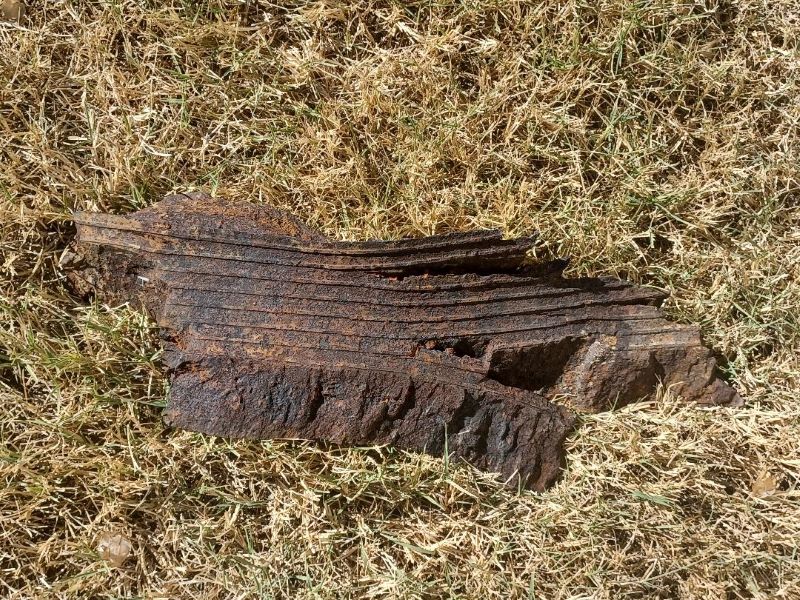  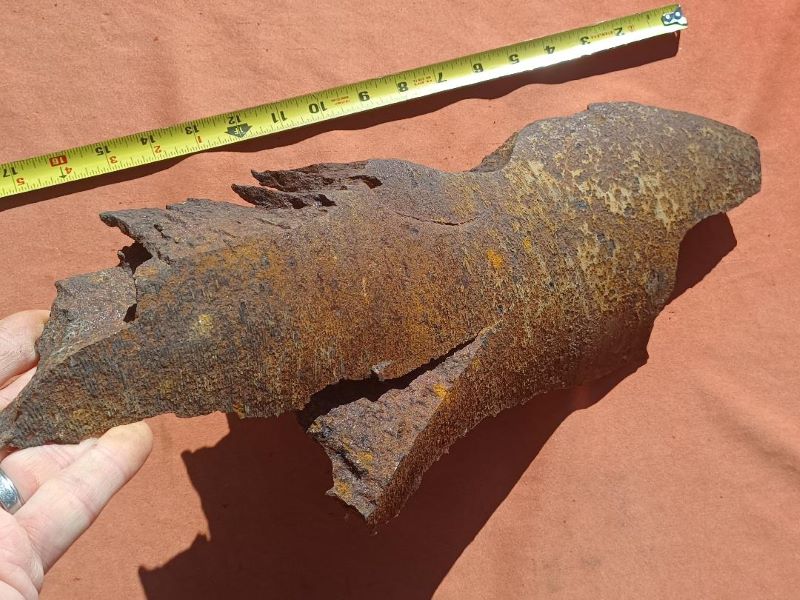 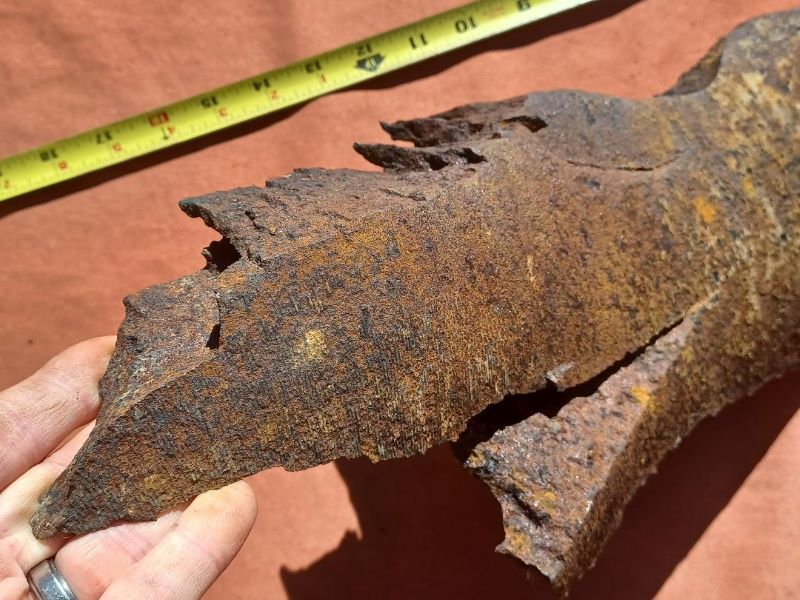 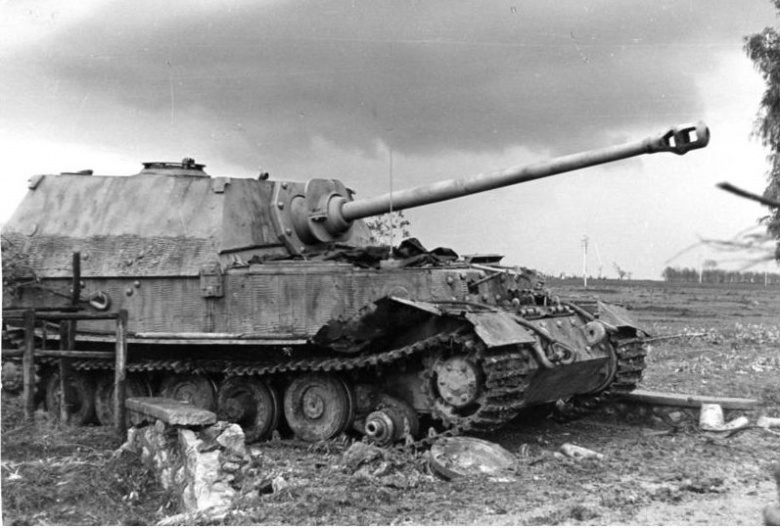 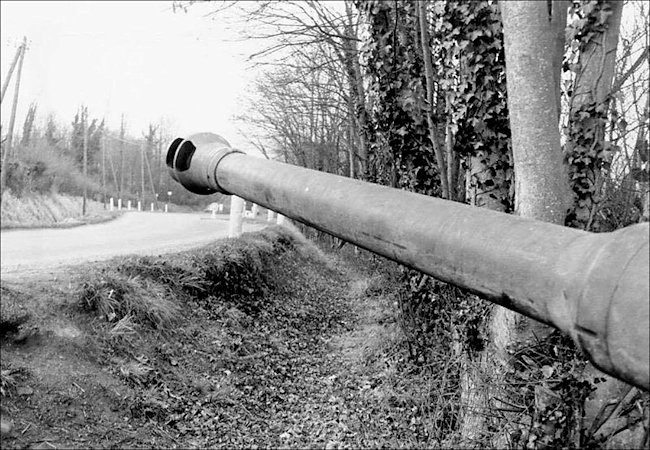  (1).jpg) 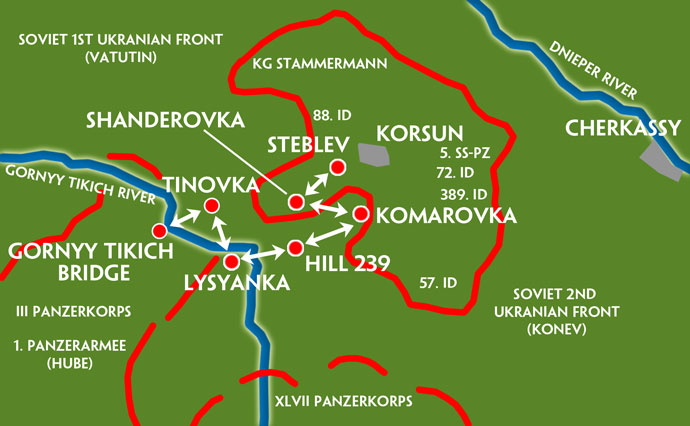 |
"HISTORIC" RELIC ! BATTLEFIELD Excavated Positions of the Legendary GERMAN 12TH SS Panzer "HITLER YOUTH" Division MG42 AMMO DRUM ! ( Recovered Bastogne, Battle of Bulge )
Here is a chance to own an incredible Historic MG 42 Machine Gun drum magazine "basket" that was recovered from the Bulge. Still has the museum tag attached. The 12th SS Panzer Division "Hitlerjugend" was a German armoured division of the Waffen-SS during World War II. The majority of its junior enlisted men were drawn from members of the Hitler Youth, while the senior NCOs and officers were from other Waffen-SS divisions.The division committed several war crimes while en route to and during the early battles in Normandy, including the Ascq and Ardenne Abbey massacres. It first saw action on 7 June 1944 as part of the German defensive operations at Caen where it suffered 80 per cent losses.In December 1944, the division was committed against the US Army in the Ardennes offensive. After the operation's failure, which became known as the Battle of the Bulge, the division was sent to Hungary to participate in fighting around Budapest. The division eventually retreated into Austria and surrendered to the 7th US Army on 8 May 1945. After the war, several members of the division, including Kurt Meyer, were convicted of war crimes. LOA Provided / Free Shipping / Installments Available !
SOLD
          
|
CHANCE TO OWN AN ORIGINAL GERMAN TIGER TANK BATTLEFIELD RELIC ! WWII Relic Panzer "TIGER" Pz.Kpfw VI TANK Commanders Cupola VISION VIEW ARMOR GLASS BLOCK OPTIC Thick Layered GLASS - Cross- Collectible as these were mfg. in NAZI FORCED LABOR CAMPS in Poland at the SIGLA Glass Factory for PANZER and LUFTWAFFE ! Beautiful Condition with remaining Feldgrau Paint and CRISP MAKER Marked Hej for Sicherheitglas G.m.b.H. of Kunzendorf.and Waffenampt proof mark ! ( Battle of Berlin )
Spectacular WWII Battlefield Dug Panzer Tank Cupula View Optic from a Tiger Tank. ( Almost kept this one! ) This one is highly collectible with the faint but visible maker mark Hej and waffenampt proof visible on the armor glass ! Recovered in Berlin. When the Battle of Berlin was building up, under 20 Tiger tanks were located in the capital. Under these were some immobile ones with broken engines or tracks, these were used as dug-in positions with Turrets used as stationary weapons. As you probably know, the Germans were knackered to begin with, and so was their tank force. The Panzerabteilung Kummersdorf, one of the biggest tank regiments defending Berlin, consisted of 11 Panzer IVs, 10 Panzer V Panthers and 11 Tigers, 8 of which were operational, as of March 1945.With other units joining the Kummersdorf-Abteilung, 9 operational Tigers defended the Oder-Front at the 5th of April, retreating into Berlin about a week later, while defending the Seelow Heights. On May 1st 1945, 5 Tiger tanks were known to be operational, fighting at the Zoo Bunker. Tank crews of destroyed Tigers joined the Infantry to fight on foot.The last Tiger 1 to be operational seems to have been abandoned about a hundred meters from the Brandenburg Gate, north of the Charlottenburger Chaussee. What happened to the crew is uncertain. As the perimeter shrank and the surviving defenders fell back on the centre, they became concentrated. By now, there were about 10,000 soldiers in the city centre, who were being assaulted from all sides. One of the other main thrusts was along Wilhelmstrasse on which the Air Ministry, which was built of reinforced concrete, was situated. It was pounded by large concentrations of Soviet artillery. The remaining German Tiger tanks of the Hermann von Salza battalion took up positions in the east of the Tiergarten to defend the centre against the 3rd Shock Army (which, although heavily engaged around the Reichstag, was also flanking the area by advancing through the northern Tiergarten) and the 8th Guards Army advancing through the south of the Tiergarten. These Soviet forces had effectively cut the sausage-shaped area held by the Germans in half and made an escape to the west for those German troops in the centre much more difficult. A fanatstic artifact !
Gross Kunzendorf and the Sigla Sicherheitsglas factory in PolandAfter arrival at the Gross Kunzendorf train station it was a short walk to the glass factory.
The Sigla Sicherheitsglas G.m.b.H. company or just Sigla, was situated in a Polish region that housed glass factories for some centuries. Sigla manufactured Safety glass or Panzer glass for the Focke Wulf plant stationed in Sorau some 5 kilometres north east from Gross Kunzendorf. KUDO was made in Gross Kunzendorf. KUDO represents KUnzendorf DOppelglas. Kudo is laminated safety glass. It is made from two glass sheets with an adhesive layer in between, which reduced the splinters of flying glass enormously upon breaking. Besides windshields for the FW 190 fighter planes they fabricated windshields for Ju87 Stuka dive bomber and prisms for viewing devises used in the German Panzers. The number of employees in Kunzendorf was somewhere between 250 and 280, making the plant in Kunzendorf number 6 of the 9 largest glass factories in the German industry. Besides forced Dutch employees they forced Russian woman to work for the glass industry as well. Most probably they used French and Belgium labourers as well in the Sigla glass factory.
Forced labour in Germany during World War two was roughly divided in three categories.
– Prisoners of war – Foreign workers – Political prisoners Absolutely fascinating website has reference information regarding these Panzer collectibles. There is also a very interesting video of the history of this forced labor factory of the Reich. Please see the links below....
LOA Provided / Free US Shipping / Installments Avaialble
SOLD
 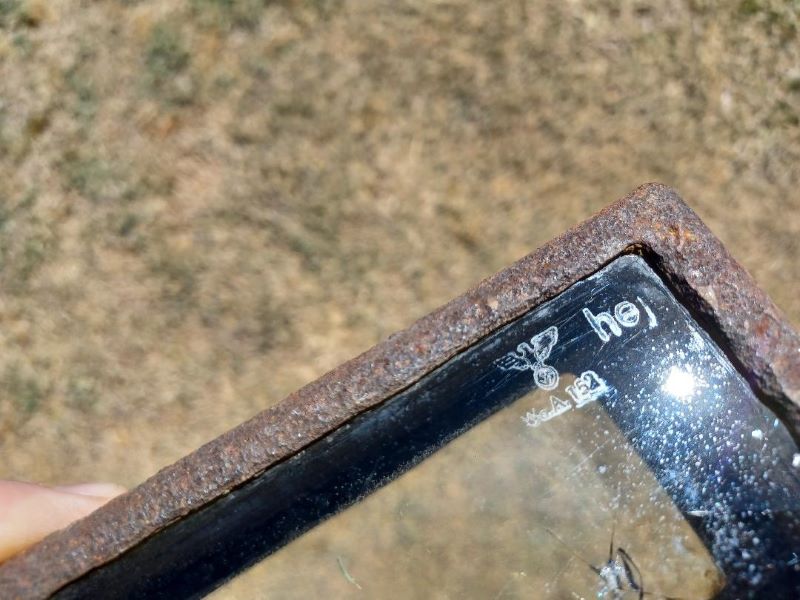  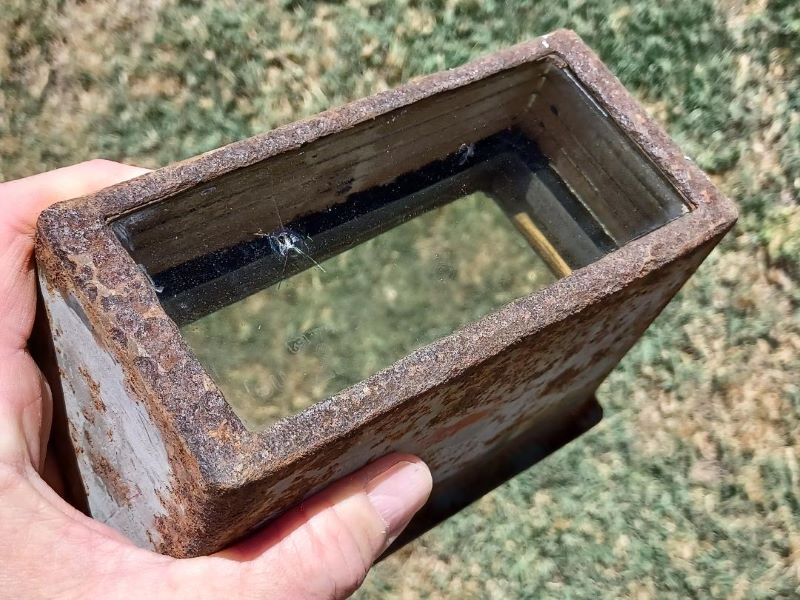 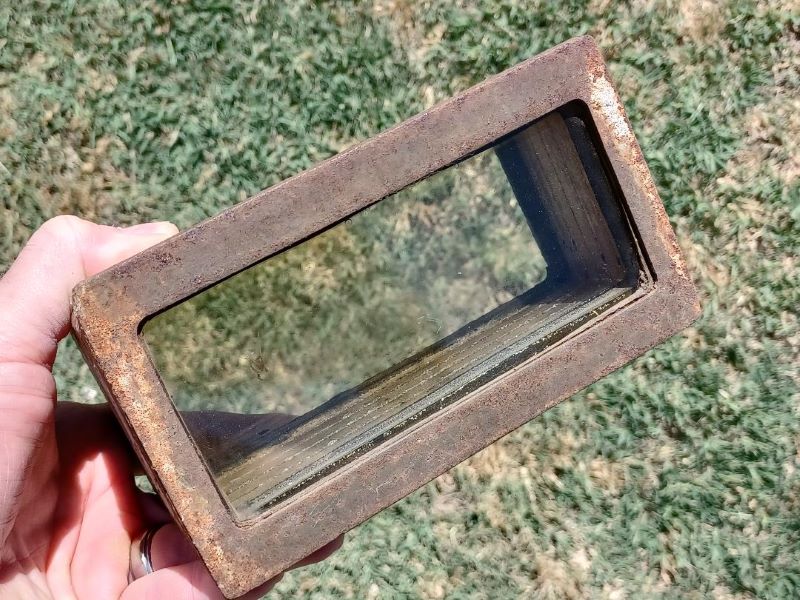 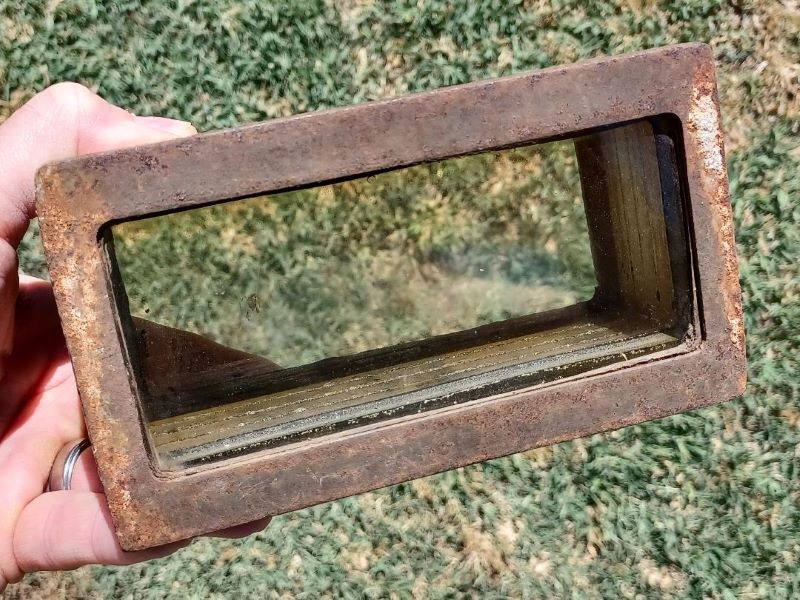 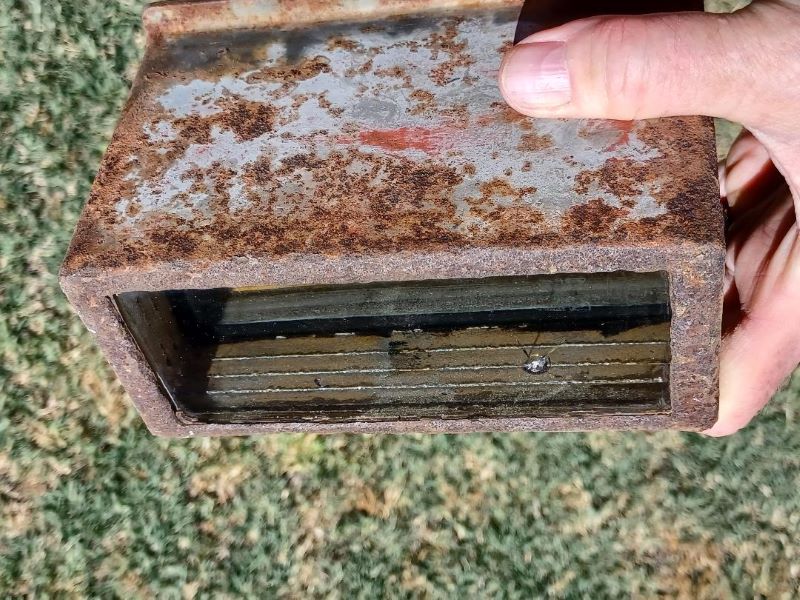  (1).jpg)  (1).jpg) .jpg) .jpg)
|
RARE US WW2 D-DAY Artifact ! US BAZOOKA Range Part from a "Destroyed in Battle" M1 Bazooka in Battle Recovered near Omaha Beach Normandy
Here is an incredible display relic for the D-Day Collector ! An actula blown apart piece from a US Bazooka that was recovered near Omaha Beach, Normandy. The Americans had hundreds or thousands of them issued to fight during D-day. As for their accuracy and range, the max range was only 200 meters, and they were unguided rockets. They would be lucky at 200 yards to directly hit pillbox anywhere! The German rifles and machine guns firing out those gun slots were far more accurate and had a much longer range. A bazooka wasn't a easy weapon to hide at all, and made any soldiers with one a very obvious priority target.
Bazookas were in fact used; every boat team had at least 1 bazooka man assigned to it for the express purpose of attacking bunkers and armored vehicles. One Staff Sergeant Strecyk from the 16th Infantry Regiment even used one to attack WN61 (near where the US cemetery is now) on Omaha- however, it should be noted that he did so from an adjacent fighting position on top of the bluffs, not from the beach.Reality struck hard on D-Day, as most troops were dropped off either in the incorrect location or short of the beach as their landing craft hit sandbars or underwater obstacles; this in turn meant that everything and everyone got wet- and neither bazookas nor their ammunition work well when wet. Additionally, a soldier dropped in chin deep or deeper water would cut himself free of his webbing, saving his life but also losing the ammunition he was carrying. Once on "dry" land, a soldier had to sprint across 200 yards of rock-and-sand beach to safety. That's a long way to run in soaking wet fatigues and even longer with soaked fatigues and a 5 foot metal tube, so many weapons were dropped in favor of speed to safety. Those who managed to hang onto their weapons and ammunition and not drown or get shot as soon as the ramp dropped- the bazooka man was in the first row of 5 soldiers- he had to first get to a place where he was in range and had a clear shot, kneel, load, clear his backblast area, and fire- all of which made him a fantastic target for the machine guns and cannons on top of the bluffs. Omaha Beach linked the U.S. and British beaches. It was a critical link between the Cotentin Peninsula, also known as the Cherbourg Peninsula, and the flat plain in front of Caen. Omaha was also the most restricted and heavily defended beach. For that reason, at least one veteran U.S. Division (lst Infantry Division) was tasked to land there. The terrain was difficult. Omaha beach was unlike any of the other assault beaches in Normandy. Its crescent curve and unusual assortment of bluffs, cliffs and draws were immediately recognizable from the sea. It was the most defensible beach chosen for D-Day; in fact, many planners did not believe it a likely place for a major landing. The high ground commanded all approaches to the beach from the sea and tidal flats. Moreover, any advance made by U.S. troops from the beach would be limited to narrow passages between the bluffs. Advances directly up the steep bluffs were difficult in the extreme. German strong points were arranged to command all the approaches and pillboxes were cited in the draws to fire east and west, thereby enfilading troops while remaining concealed from bombarding warships. These pillboxes had to be taken out by direct assault. Compounding this problem was the allied intelligence failure to identify a nearly full-strength infantry division, the 352nd, directly behind the beach. It was believed to be no further forward than St. Lo and Caumont, 20 miles inland. The V Corps was assigned to this sector. The objective was to obtain a lodgment area between Port-en-Bessin and the Vire River and ultimately push forward to St. Lo and Caumont in order to cut German communications (St. Lo was a major road junction). Allocated to the task were 1st and 29th Divisions, supported by the 5th Ranger Battalion and 5th Engineer Special Brigade. LOA Provided / Free US Shipping !
HOLD
 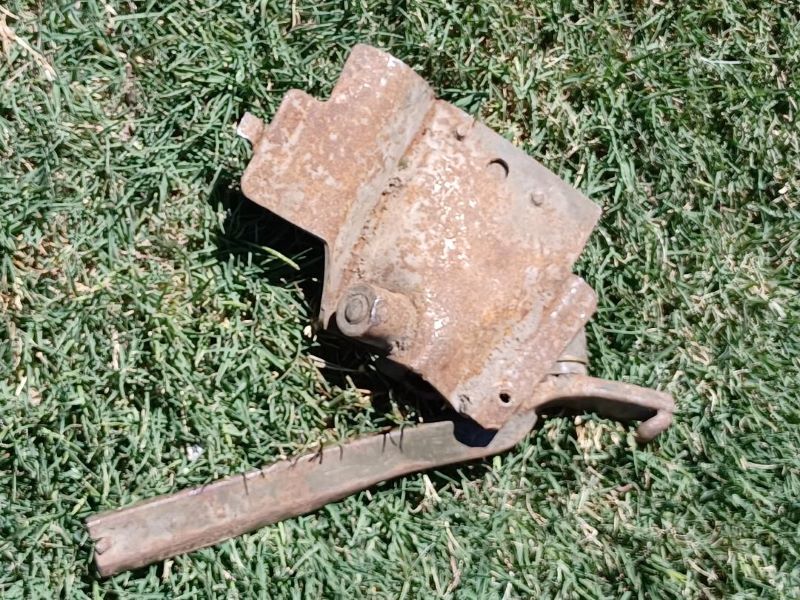 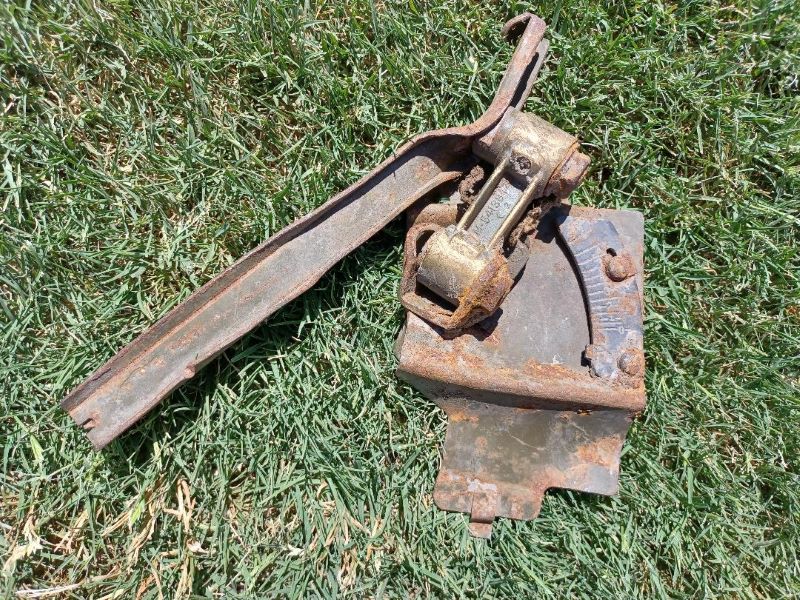 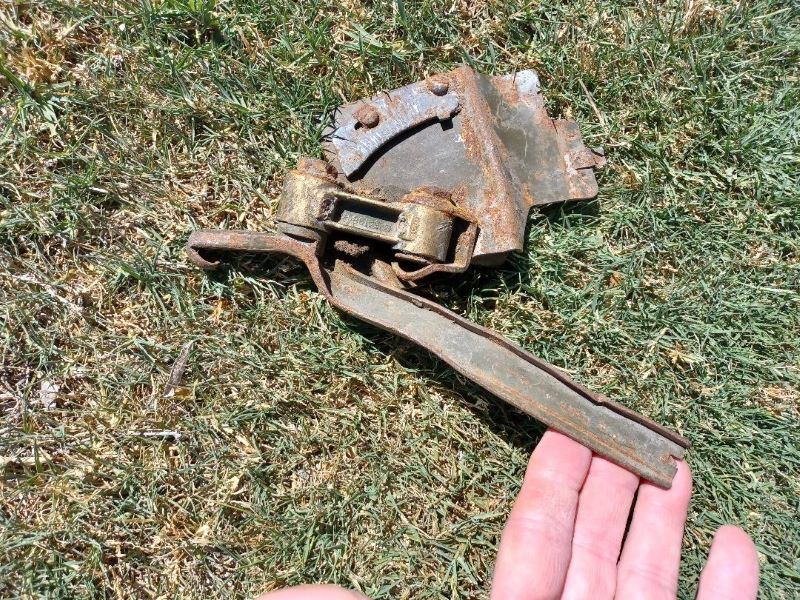 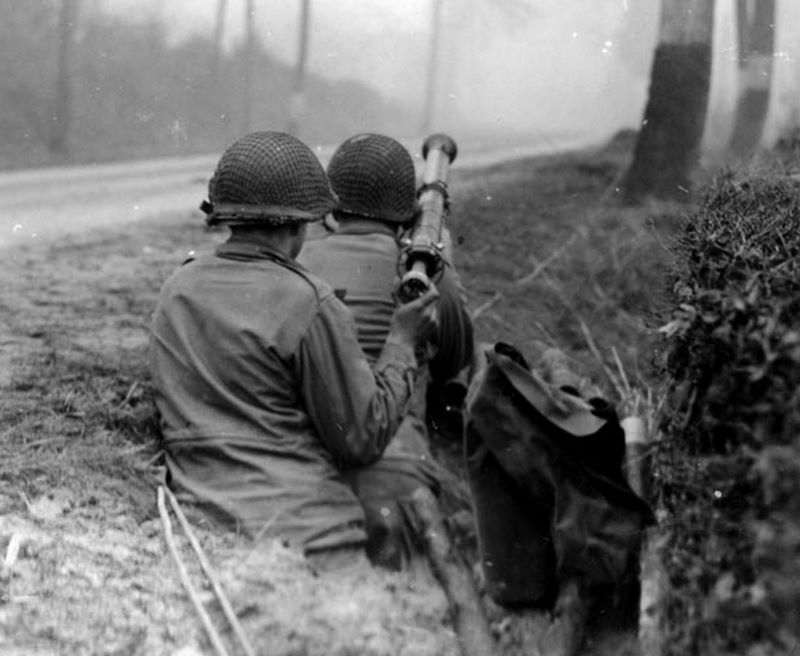 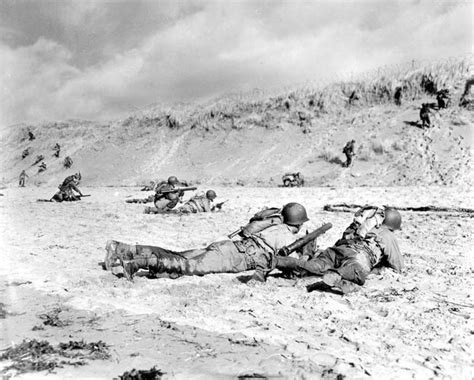  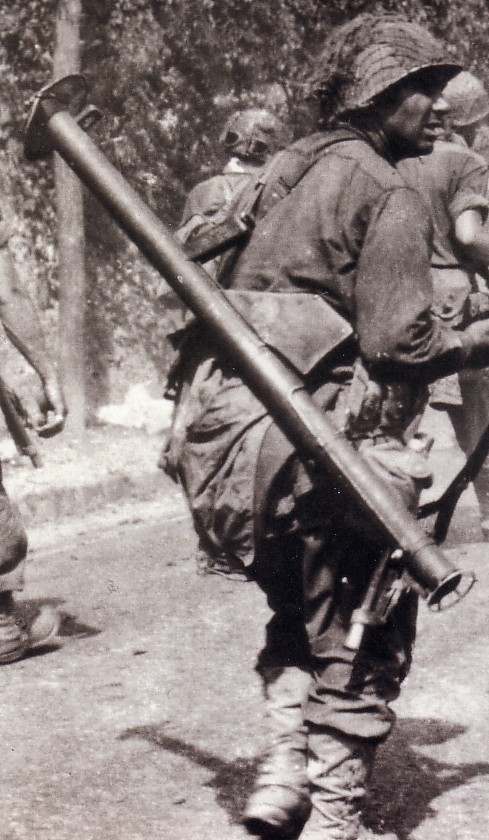
|
INCREDIBLE WW2 FIND ! Museum Worthy ! Battlefield Dug Relic Fired WW2 Panzer "KING TIGER" TANK - KwK 43 8.8 Cannon Shell AP Round ( Battle of Berlin Recovery ) Here is an Impresssive pair of Battlefield Dug Relic Panzer Tiger II Tank Large Battle Used KwK 43 / 8.8 cm Shell Round AP with the larger drive bands that are rarely if ever found recovered condition. Most likely these were from the SS-Pz. Abt. 503 Heavy Tank Battalion .. Dont let one of these opportunities get away ! Last of the King Tigers.In late April 1945, a detachment of about a dozen Kingtiger heavy tank from s.SS-Pz.Abt. 503 was committed to defend Berlin, starting with engagements on the Seelow Heights on April 16. About six to nine tanks survived the retreat to Berlin on April 24. The Kingtigers were usually deployed in small groups of two or three and often fought in the Zitadelle area in support of SS-Pz. Gren.Div. “Nordland”. One group was active around the Potsdamer Bahnhof railroad station in the southeast corner of the Zitadelle, which offered good firing opportunities against Soviet tanks on the other side of the Landwehr Canal. The train stations had large plazas at the front which provided the Kingtiger tanks with excellent fields of fire. This area also served to block the approaches to the Führerbunker, which was a short distance north of the station. Hitler personally took note of the detachment’s role in the Berlin defense, and decorated its commander, Obersturmbannführer Herzig with the Ritterkreuz at the Reich Chancellery on April 28. The Kingtiger illustrated here, number 314, was commanded by SS-Unterscharführer Georg Diers. On April 28, this tank and tank 100 commanded by SS-Oberscharführer Karl-Heinz Turk were ordered to stage an attack from the Postdamer station towards the Anhalter station several blocks to the southeast. They became engaged in a day-long melee with Soviet T-34-85 and IS-2 tanks. They were finally forced back to the Potsdamer station as seen here. On the morning of April 30, the Soviet tanks managed to penetrate further into the Zitadelle, and Turk’s tank was hit on the right front corner, ripping off the track and damaging the drive sprocket and final drive. On May 1, Turk’s immobile Kingtiger was nearly overrun when a platoon of Soviet infantry suddenly appeared out of one of the sewer entrances; it was abandoned in the evening after running out of ammunition. Diers’ crew claimed to have destroyed 39 Soviet tanks in the Berlin fighting.     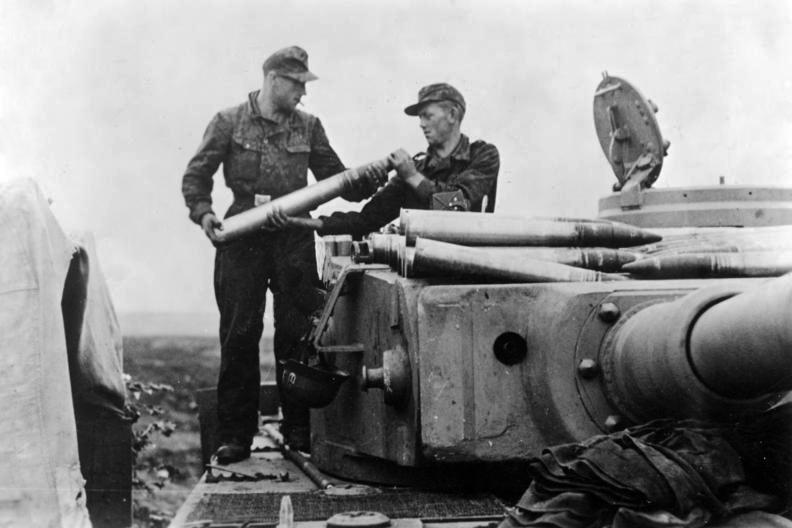   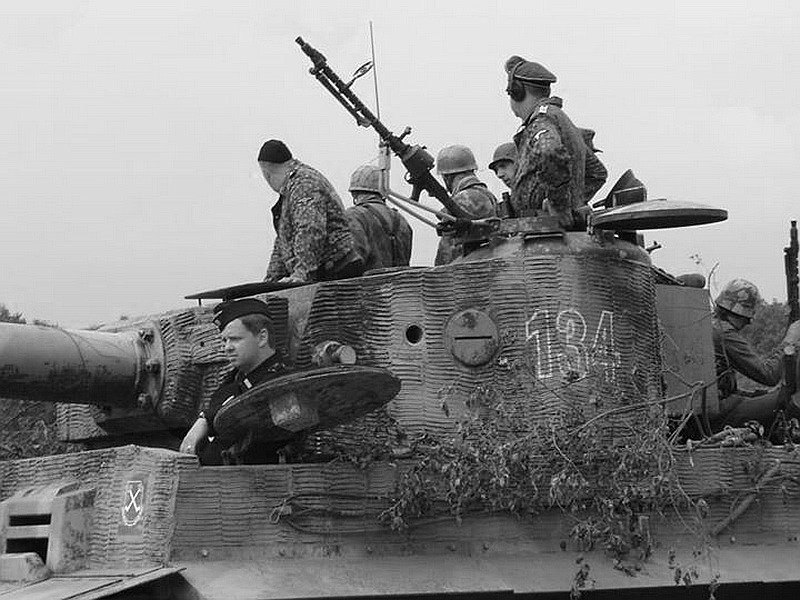   |
RARE CHANCE TO OWN A "Historic" Section OF A WW2 " Sd.Kfz 181 TIGER I HEAVY Tank" Battlefield Dug BATTLE-DAMAGED German Tank Large SHARD " MAIN GUN CANNON BARREL PIECE Blown off in Battle !! Panzer "TIGER I" Sd.Kfz 181 / Pzkw VI Tank" Dug BATTLE-DAMAGED German Tank Track Link ( Recovered from remains of a destroyed Tiger Tank in positions of Otto Carius TANK ACE of the Schwere-Panzer-Abteilung .502 )
I was able to purchase from the digger a few pieces of historic battle damaged track sections from a Tiger I as well as this incredible impressive large heavy section of the main gun barrel blown apart recovered in positions of the famous 502 Schw Pz. Abt. near Bauska city Eastern Front. Tiger Tank Relics sell quickly so don't miss out on a chance to own a main gun section piece still showing the rifleing ! .
Diggers information: " The Tiger Tank main gun barrel shard from a blown Tiger Main Gun Cannon comes from 502 Schw Pz Abt tiger which were lost in summer 1944 Latvia close to Bauska city. Most probably the Tiger were middle production series, it used to have rubber band wheels but late type tracks and roof episcope visor. By documents two tigers were lost there, it used to be hit with captured German PAK 43 gun, we have investigate the spot very well but non traces of second tiger, as well no shell casings from PAK 43 were found in closer wood, there are remainings of blown up T-34 and Su 76 as well in 300-500 m around and about 100m from the tiger spot pieces of russian 45 mm antitank gun ripped off armor shield piece. on the direct spot with tiger pieces we have found 76 mm AP projectile model 53-BR-350SP ,which could penetrate the Tiger front from 300 meters, and board from 500 meters, my thoughts it could be hit with SU 76 too. just were used this special ammunition. Glad I can share those facts with you hope you find its interesting for you. "
Schwere-Panzer-Abteilung.502. Leutnants Otto Carius and Erich Kercher of Schwere-Panzer-Abteilung.502 with KonigsTiger (Pzkw VI) tanks went into action in eastern Latvia and properly held up the advance of the Russian 6th Guards Tank Army as they attempted to cut off German Army North near the Gulf of Riga. In July 1944, Vilnius, Lithuania was captured. The Russians drove towards Riga, Latvia to contain German Army North. Leutnant Carius destroyed 30 JS2 (Stalin) tanks in a vehicle park. The rapid firing Tiger tanks easily outfought the single shot Stalin tanks, which had to depress their guns, to fight in such close quarters. The Russians were consistently outfought by Carius and Kercher's Konigs Tiger tanks. Leutnant Salvermoser described his tracking a Russian T34 tank because the tank retreated uphill. A shell fired from his StuG III destroyed the T34. Within the next instant a Russian Stalin tank shell destoyed his SturmGewehr (assault gun) III throwing the Leutnant clear. He woke up in a field hospital Twenty four hours later. He was lucky to become alive.The SturmGewehr III would be a fixed assault gun (no turret), tank destroyer having a low profile which represented the most popular mass produced German armoured vehicle of World War Two. German soldiers were positive about battle when combined with trustworthy StuG III.Hyazinth Graf (Count) Strachwitz von Gross Zauche und Camminetz survived his christening as well as on 21 August 1944 when 30 German divisions, were encircled north of Riga, Latvia, Strachwitz co-ordinated using the Kriegsmarine (German Navy) to eliminate 50 T34 tanks massed for action near Tucums, Latvia against German attacking forces. The Russians had reached thec Gulf of Riga, Latvia and collected bottles of sea water to prove to Marshall Stalin that they had reached the sea to encircle German forces east of Riga. 10 Konigs Tiger tanks of Schwere-Panzer-Abteilung.502, underneath the command of Leutnant Carius, totally lacking infantry or artillery, attacked Soviet blocking forces near Tucums, Latvia on 21 August 1944 and punctiliously defeated them thereby allowing 500,000 men of German Army North to retreat intact in to the Kurland Kessel (fortress) due west of the Gulf of Riga. Leutnant Wolfgang Koth of 2.Panzer Division, described the ensuing carnage brought on by the Kriegsmarine bombardment, along with desperate hand at hand fighting. The Russians were unable to subjugate the Kurland Kessel, a very strong force, until they surrendered 9.5.1945. The Kriegsmarine ensured this Kessel was well supplied by sea.
Total has US / Canada shipping ( Free ) / already included ! / Also monthly Installments available so it doesnt get away !
HOLD   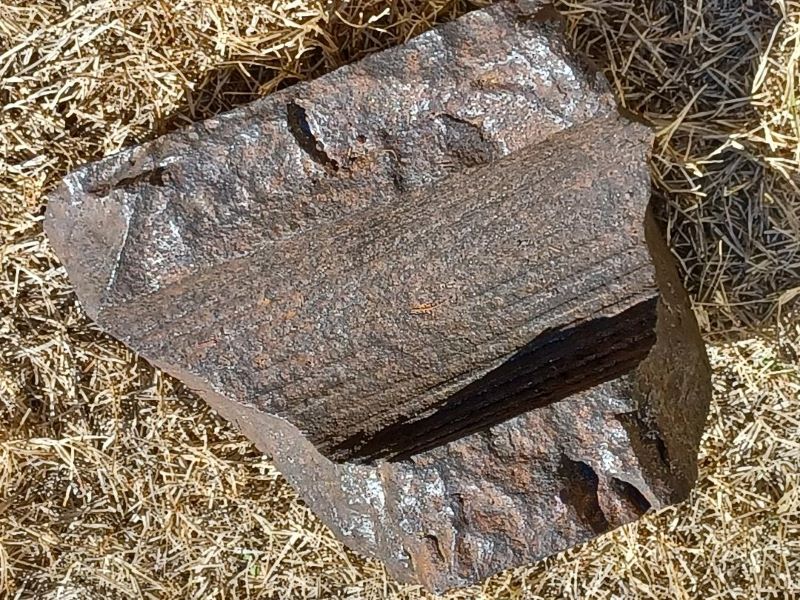  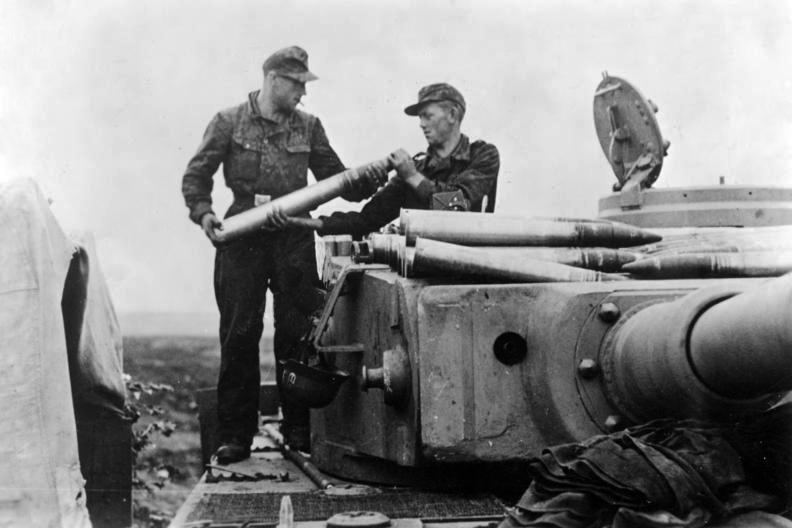  .jpg)  |
|
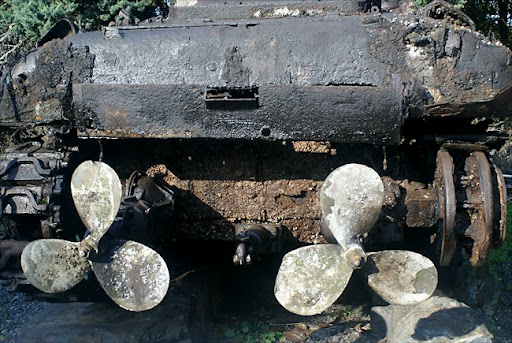
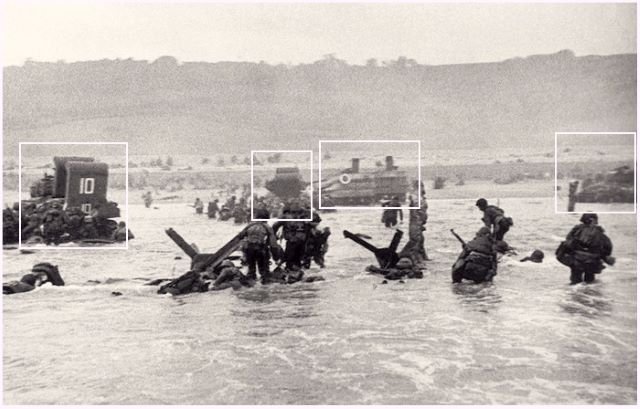
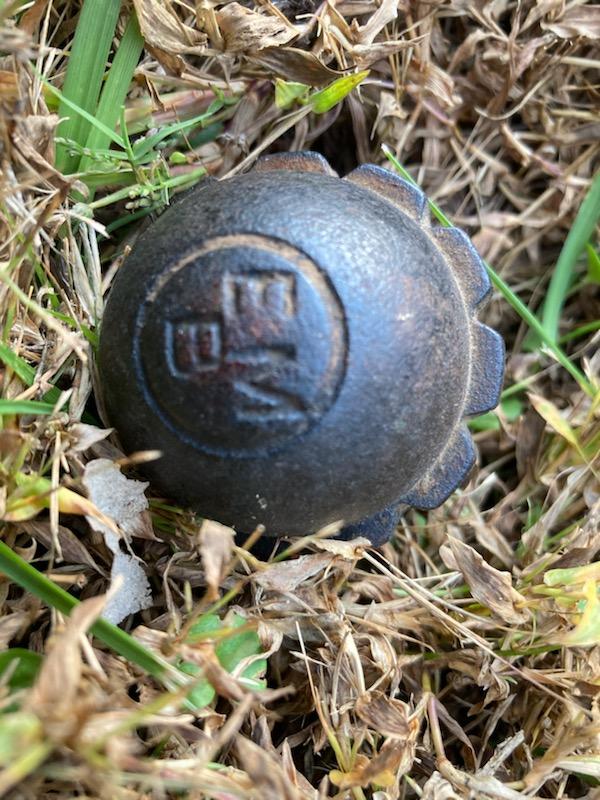
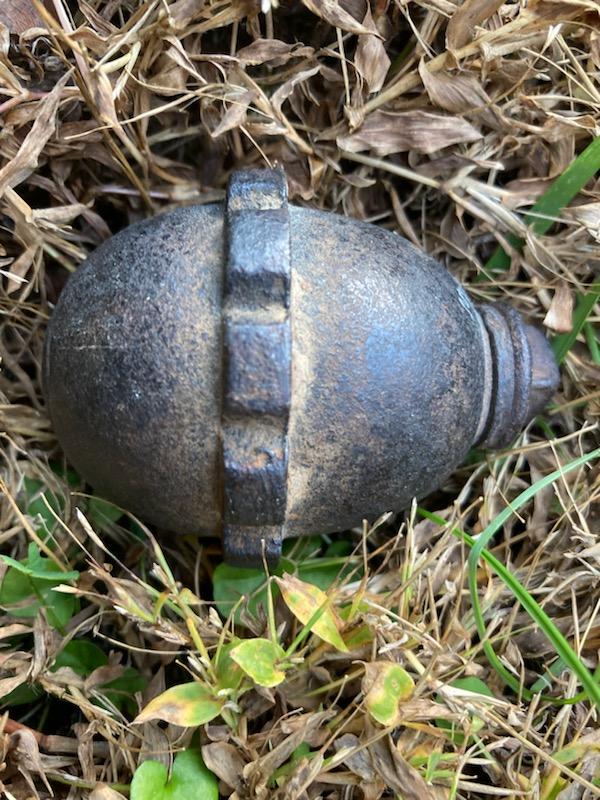
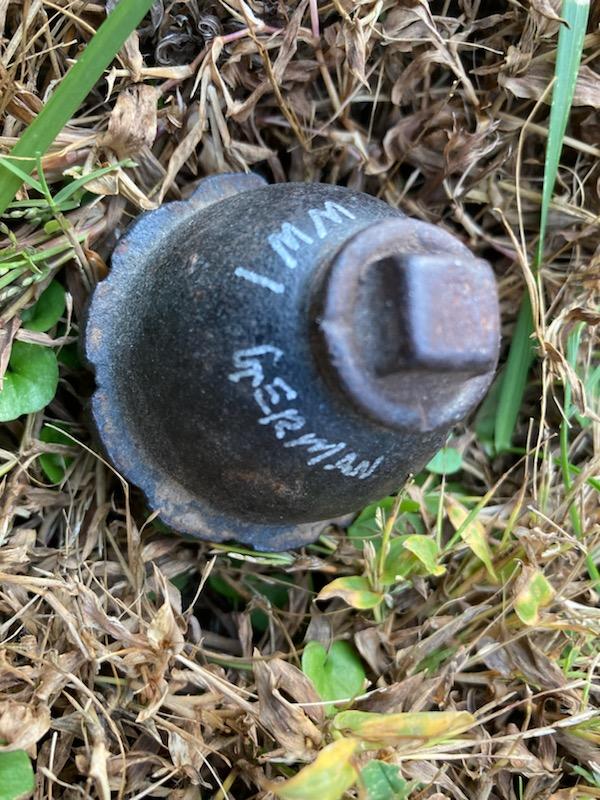

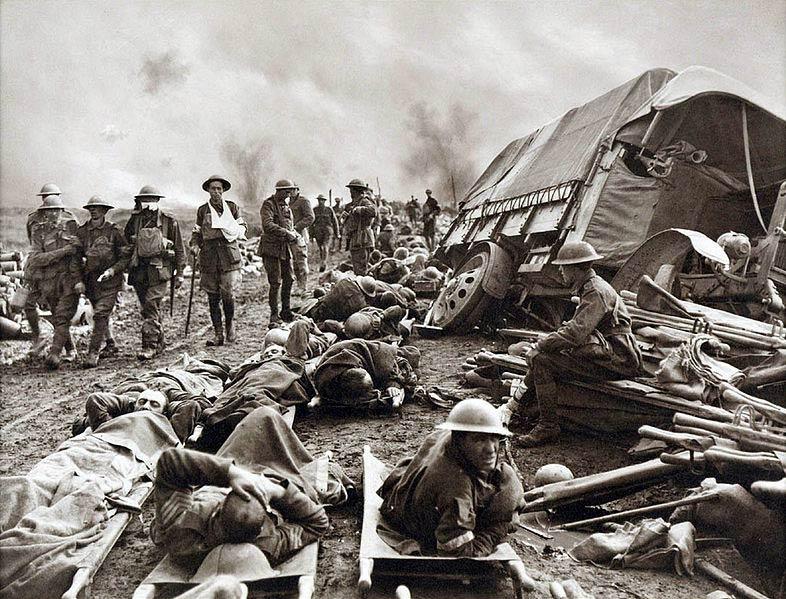
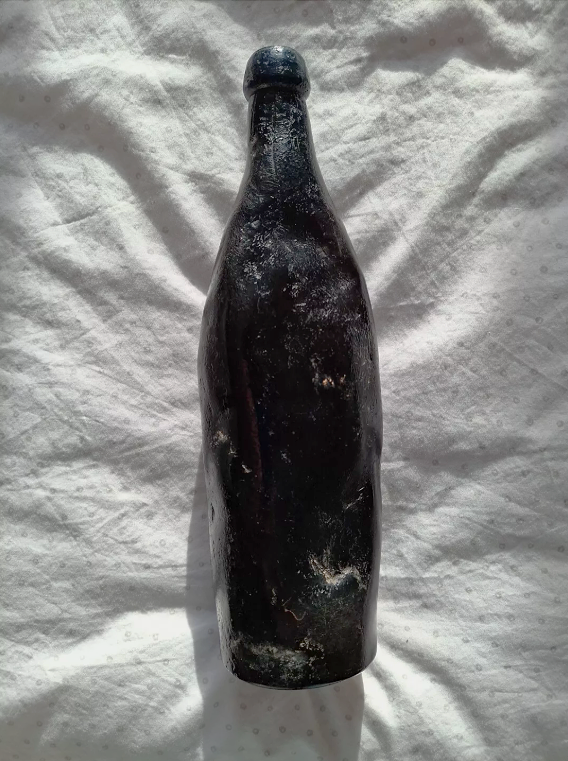
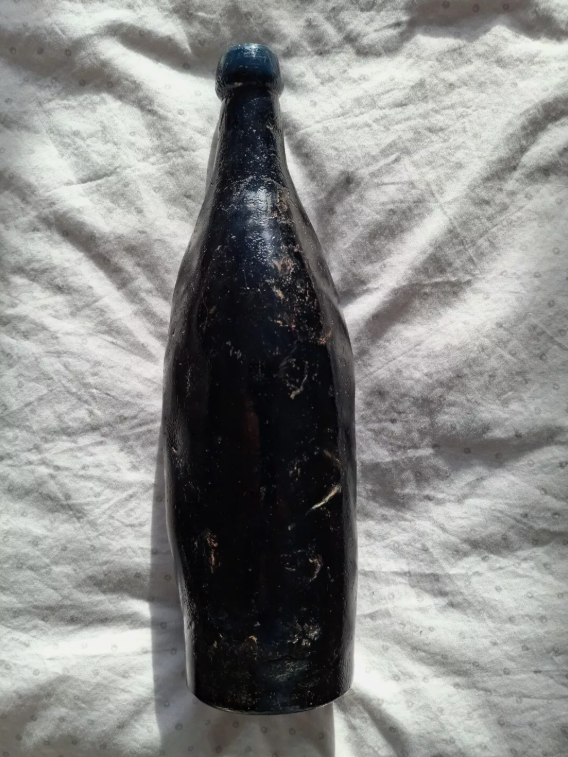
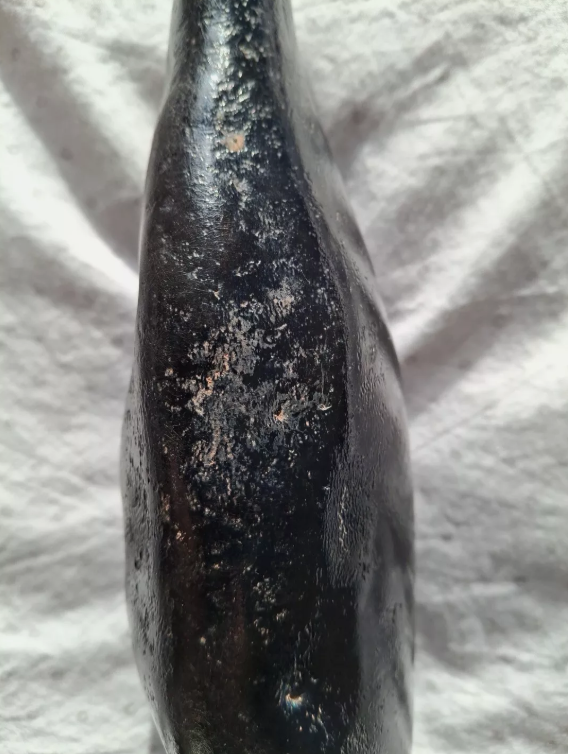

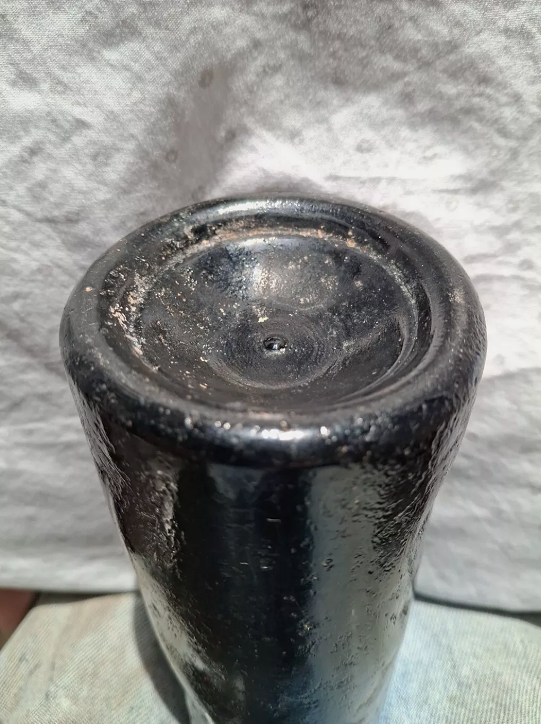
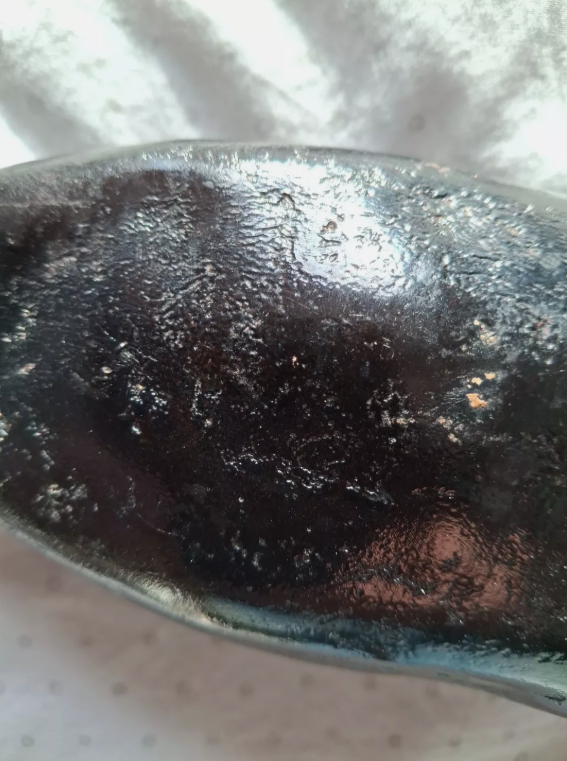

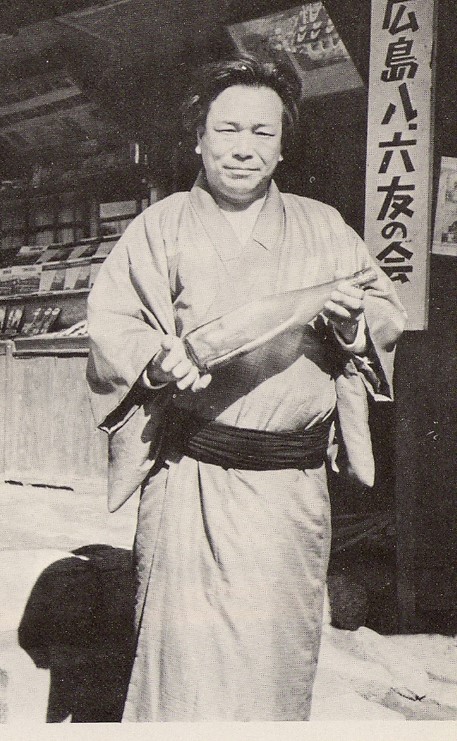












 EKL 2024 2 - Copy.jpg)



.jpg)


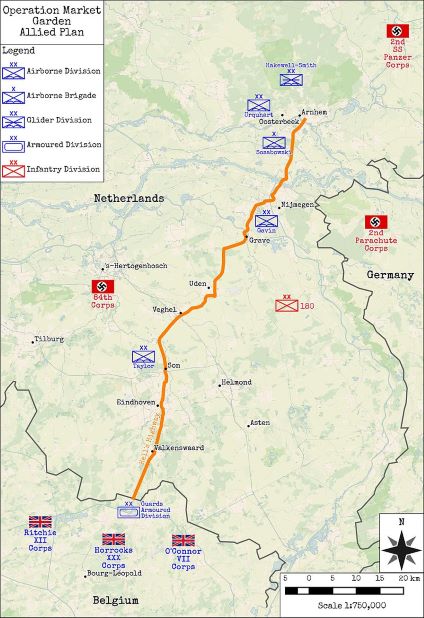


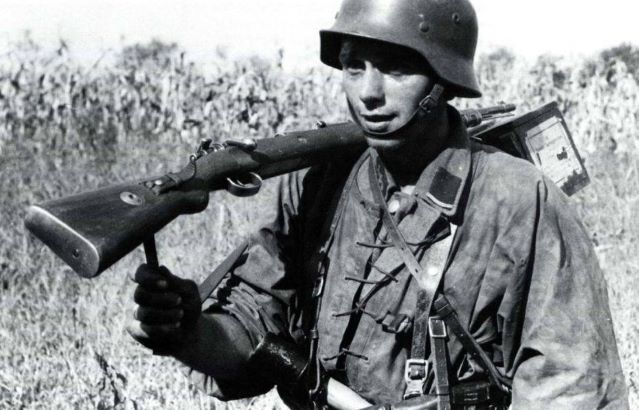












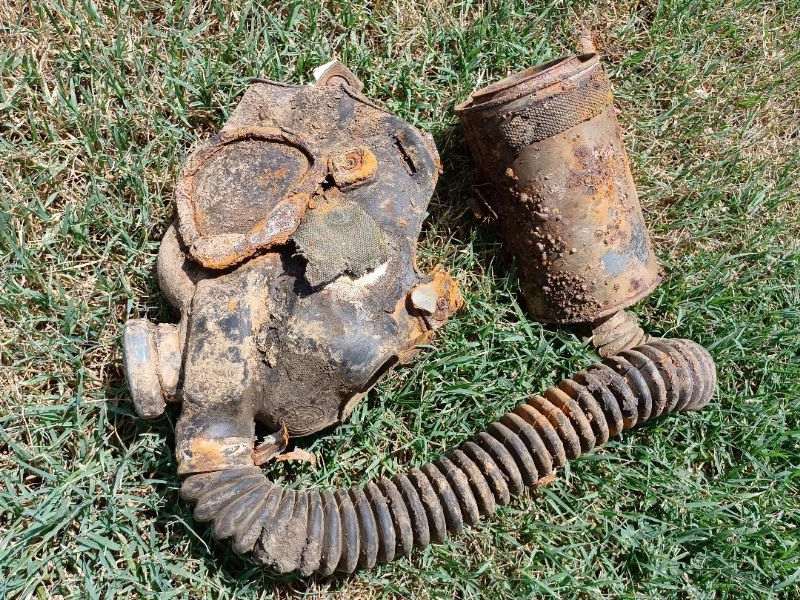


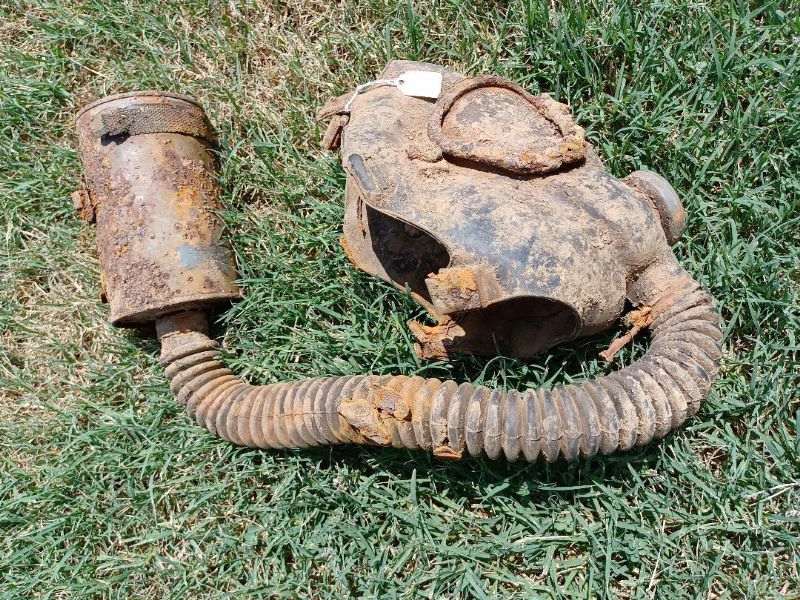
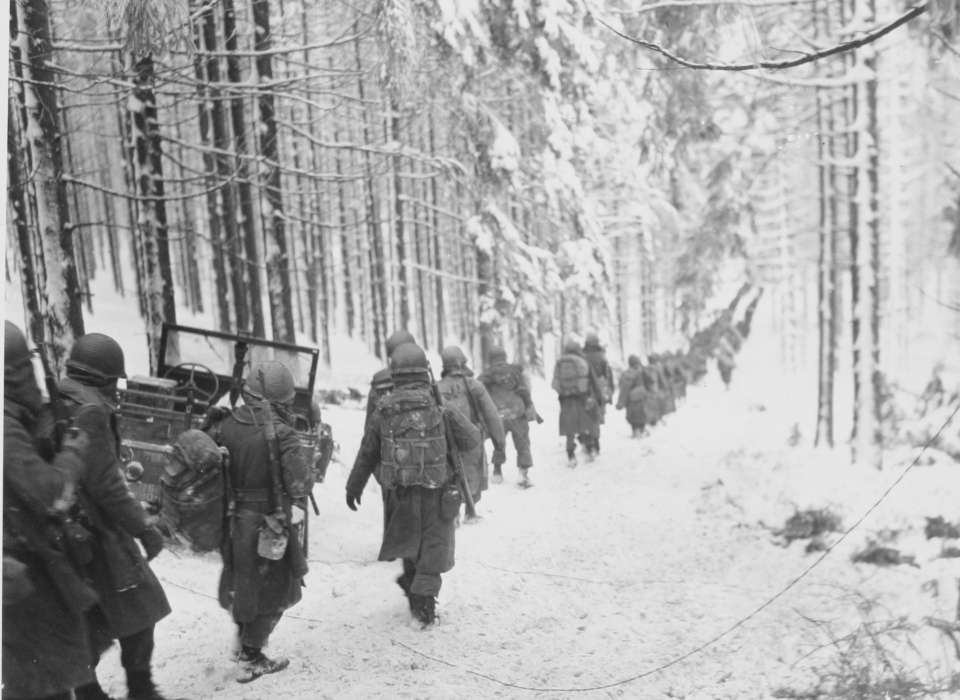
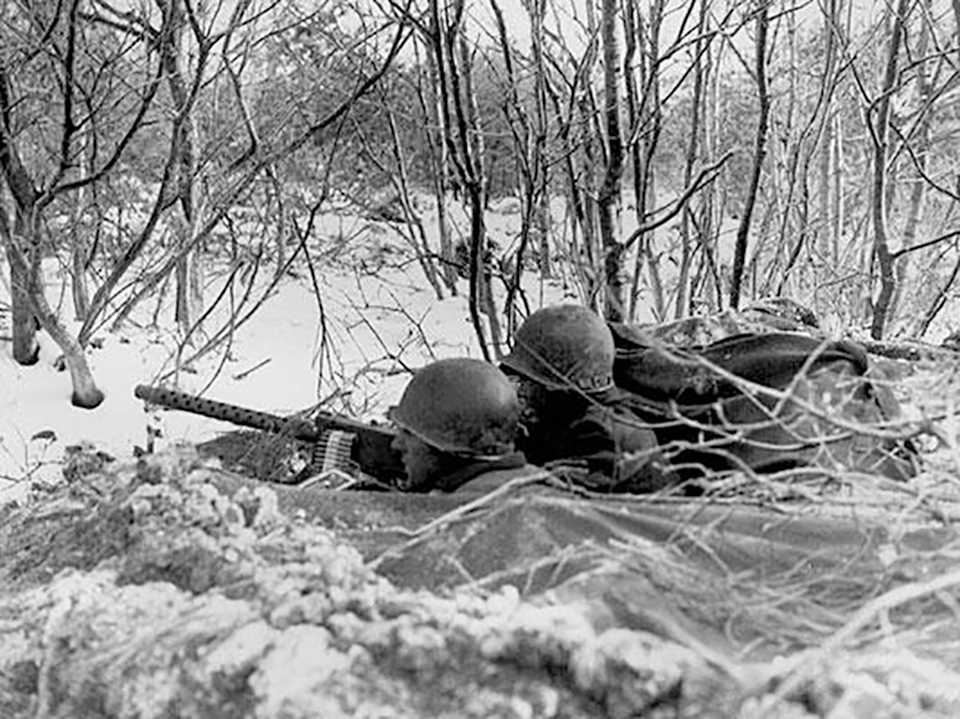
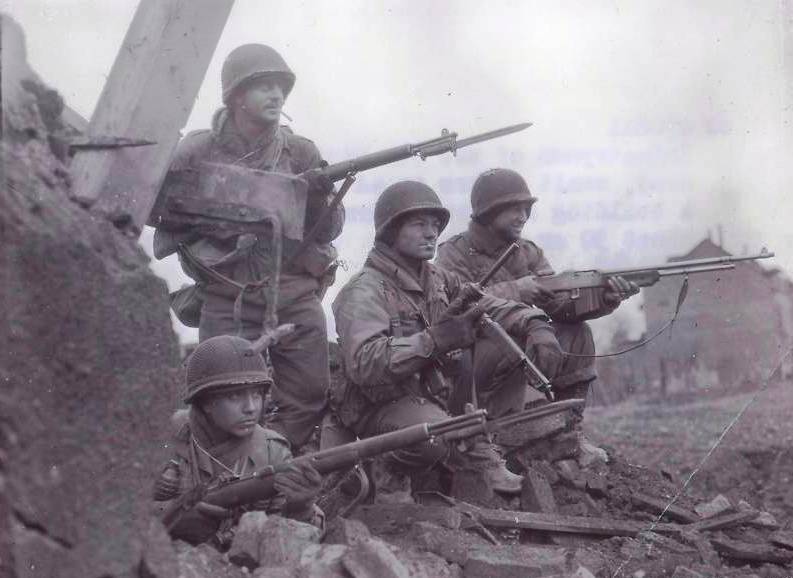
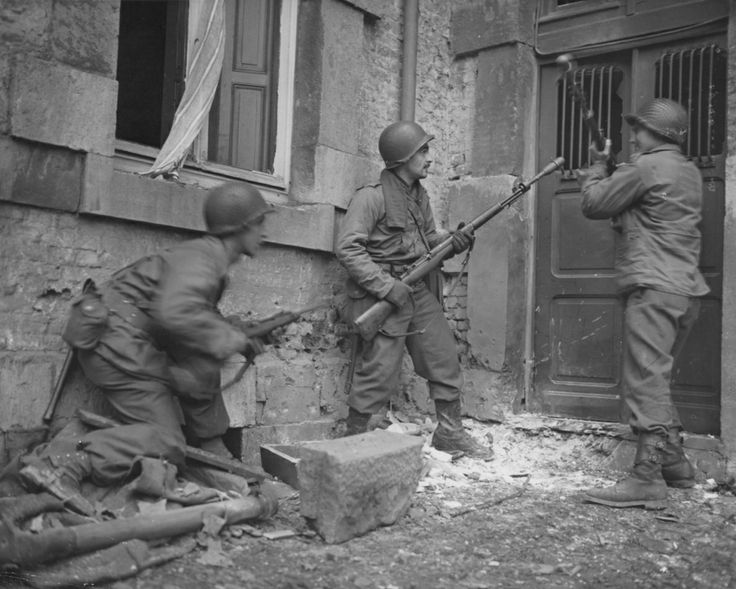
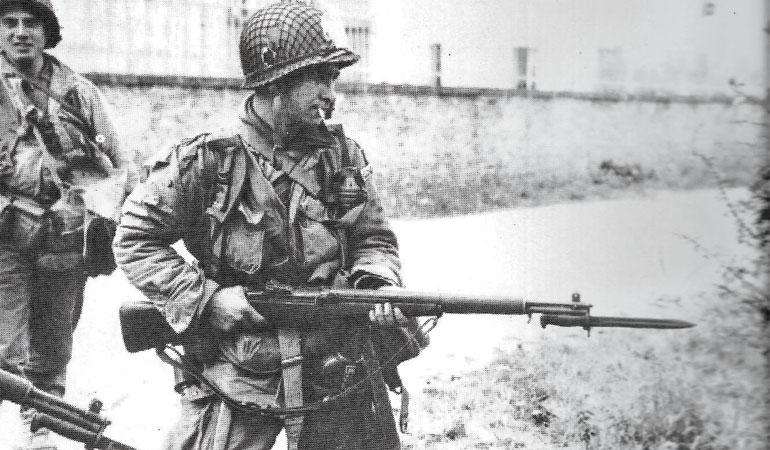

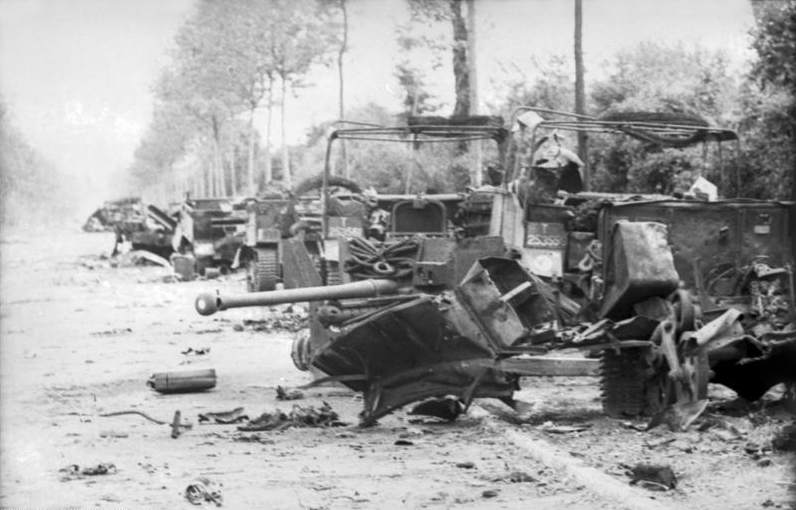
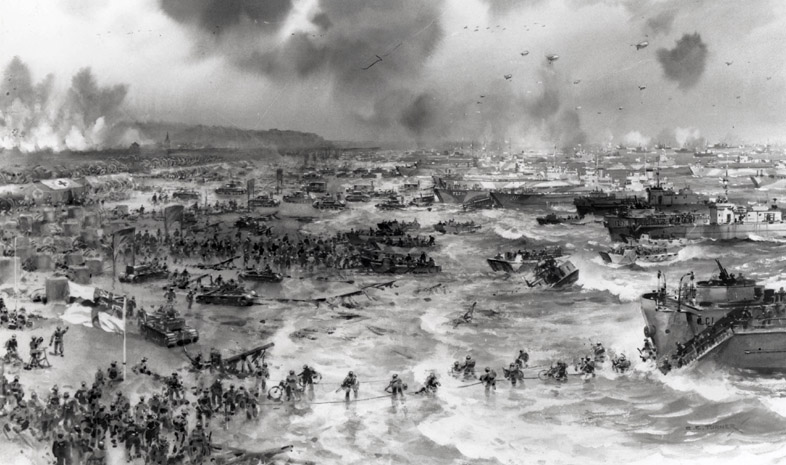
 (1).jpg)
.jpg)
.jpg)
 (1).jpg)
 (1).jpg)
 (1).jpg)
 (1).jpg)
.jpg)
.jpg)
.jpg)

